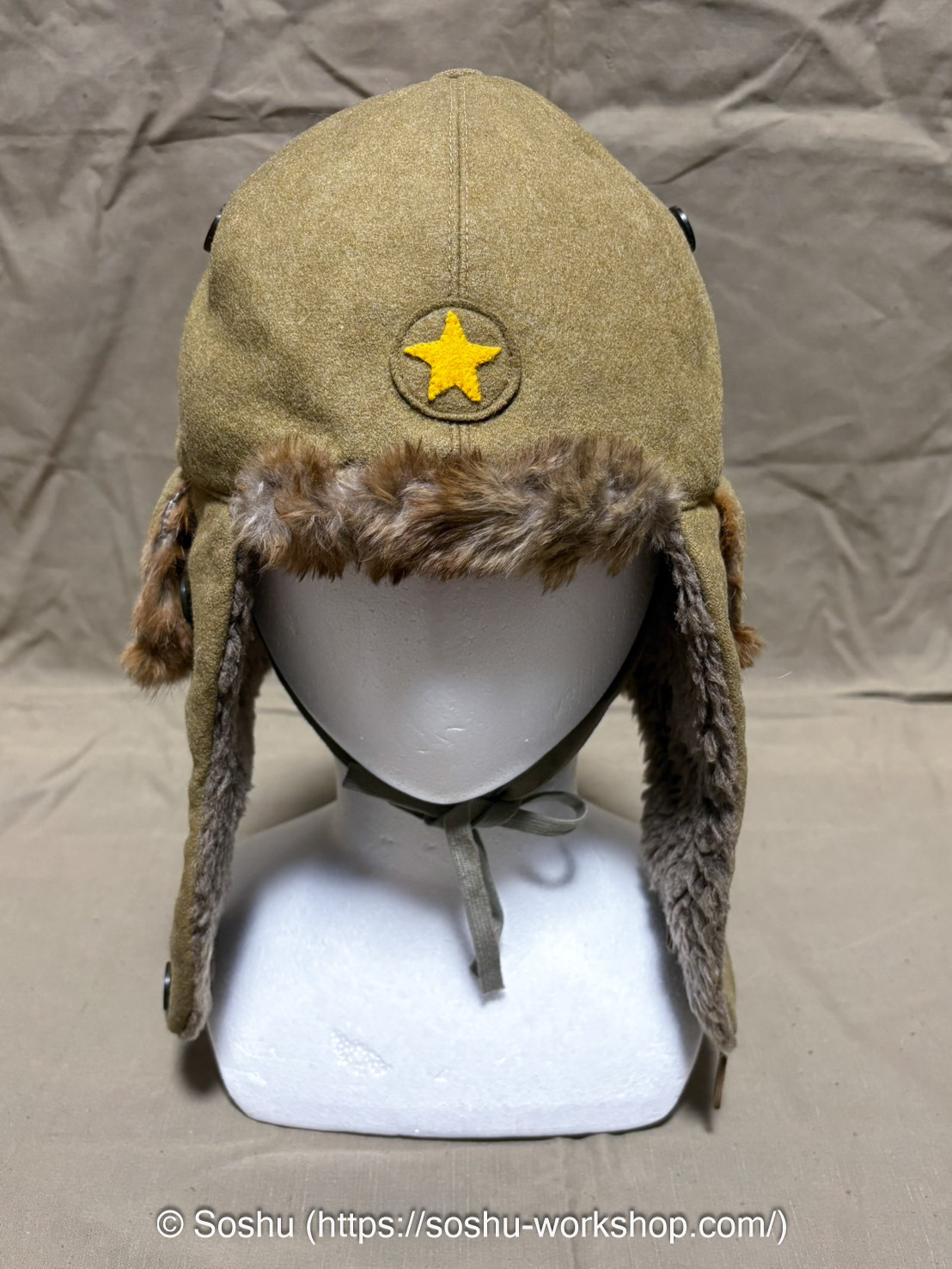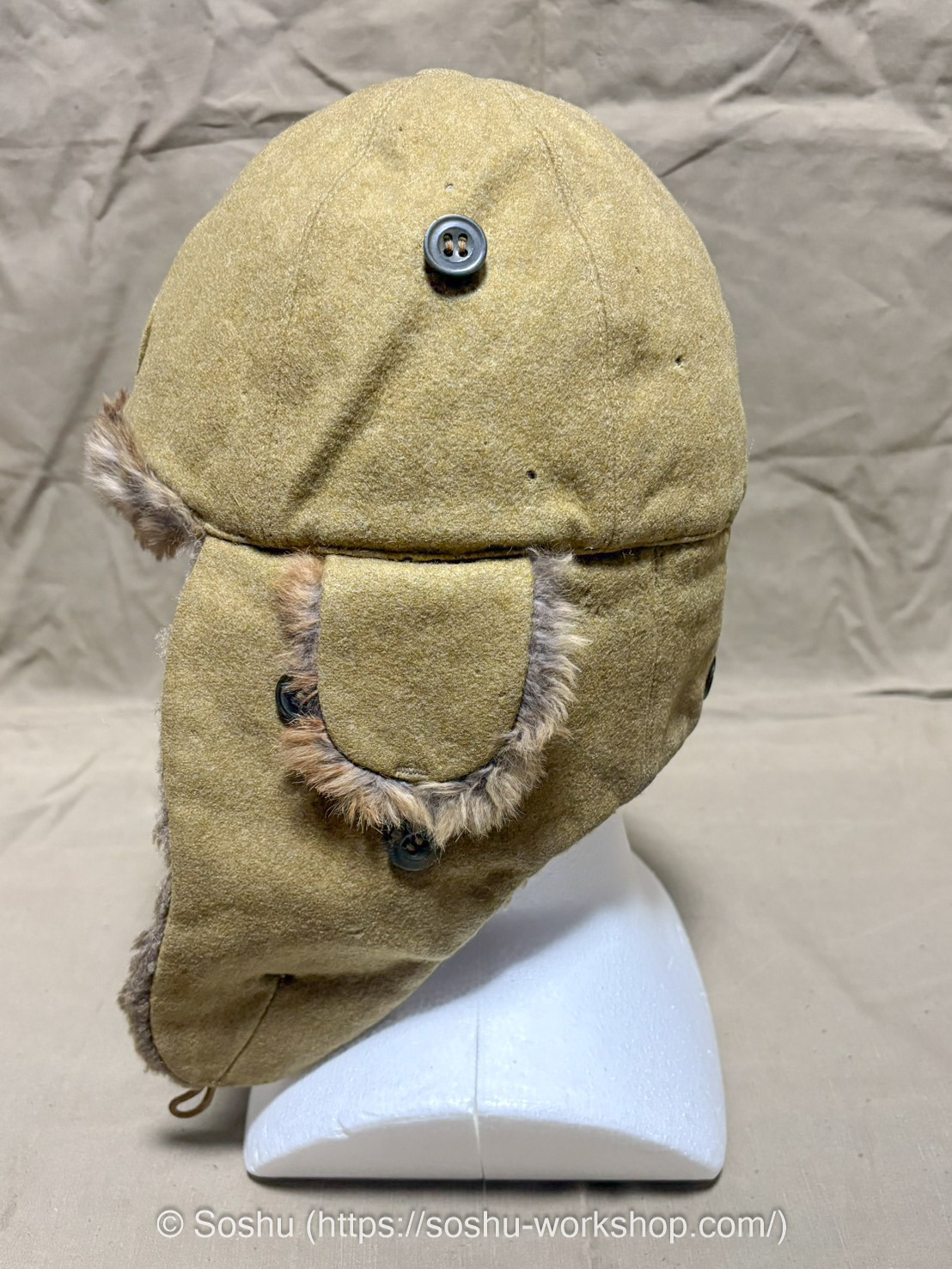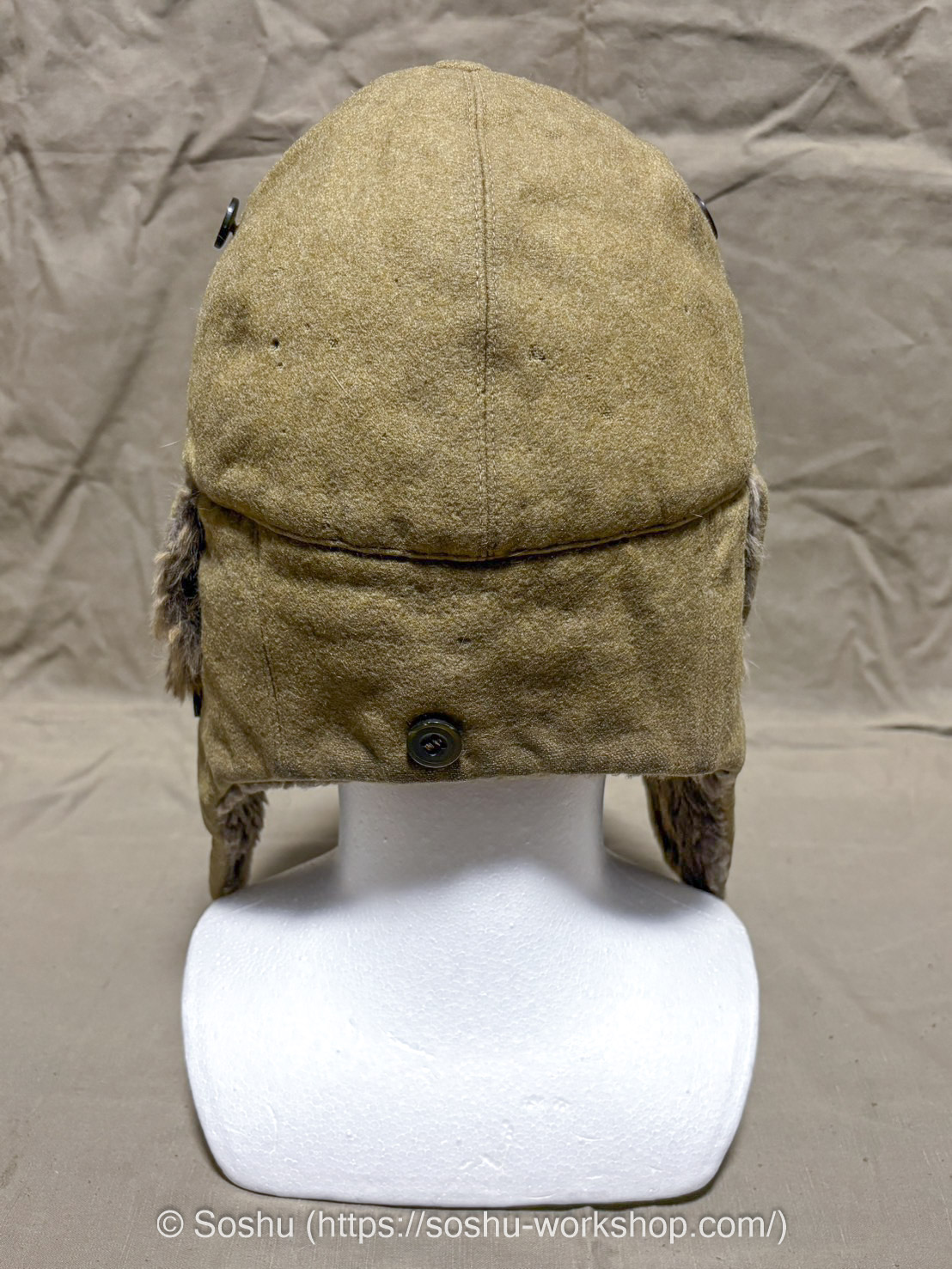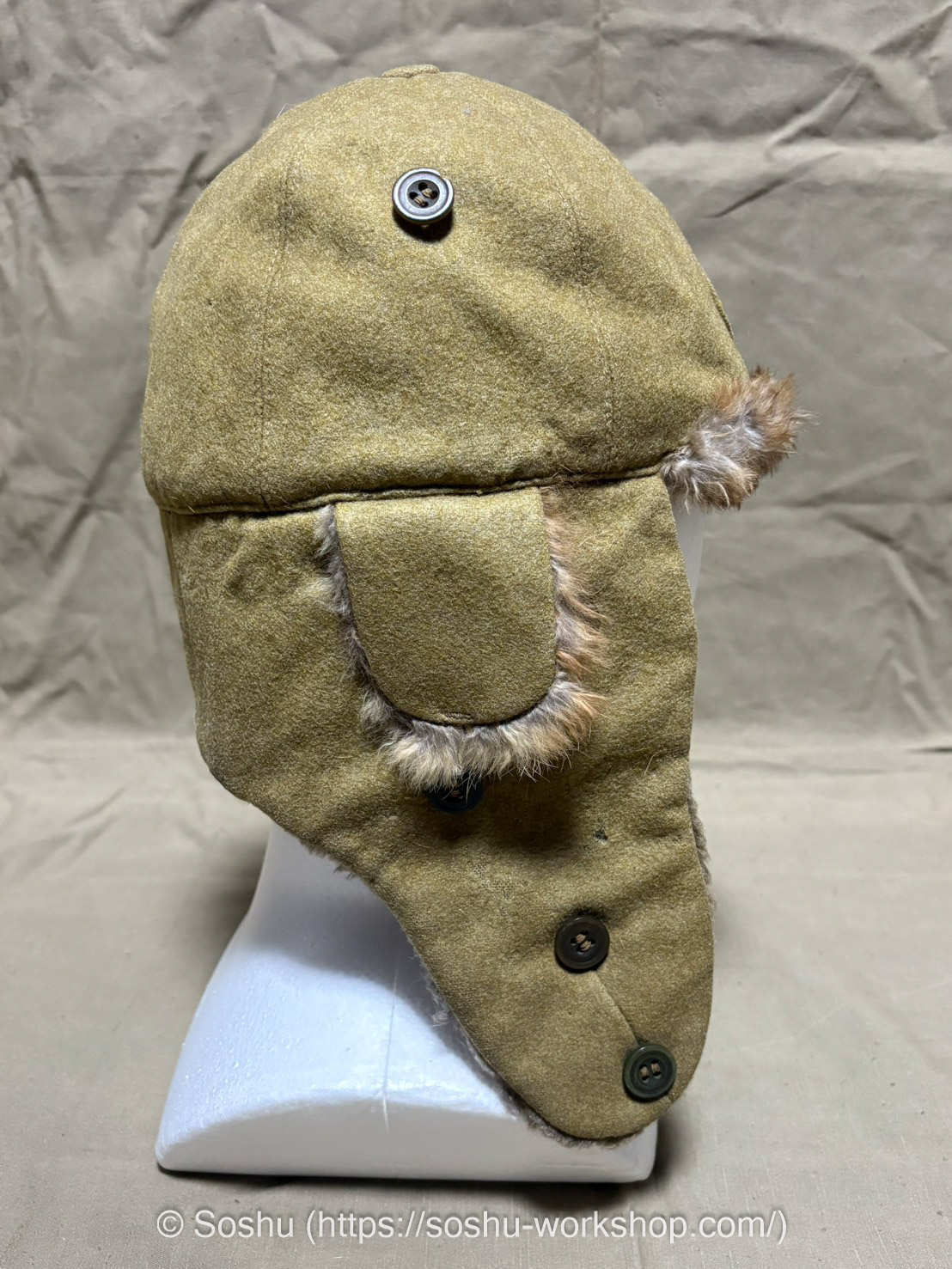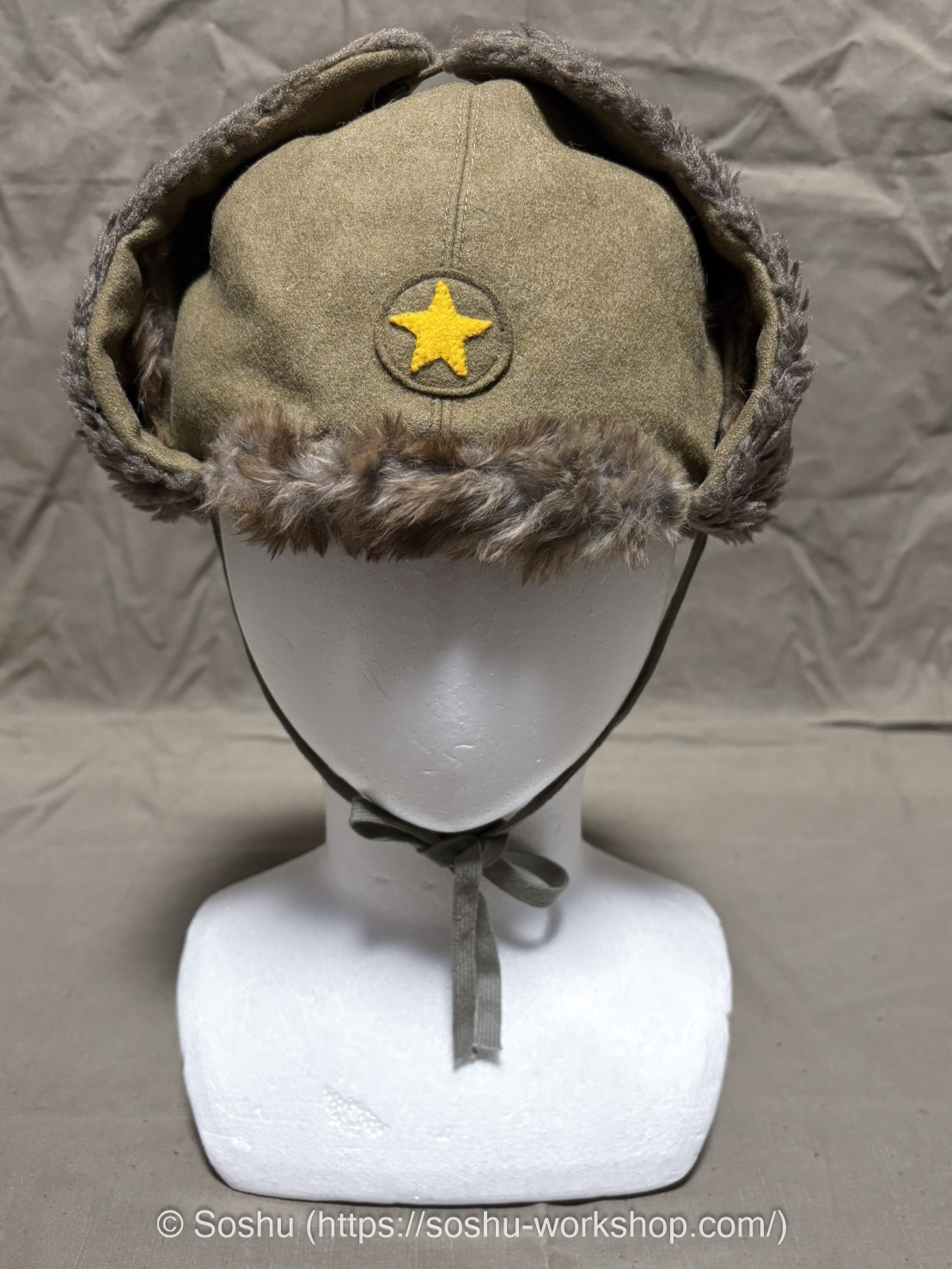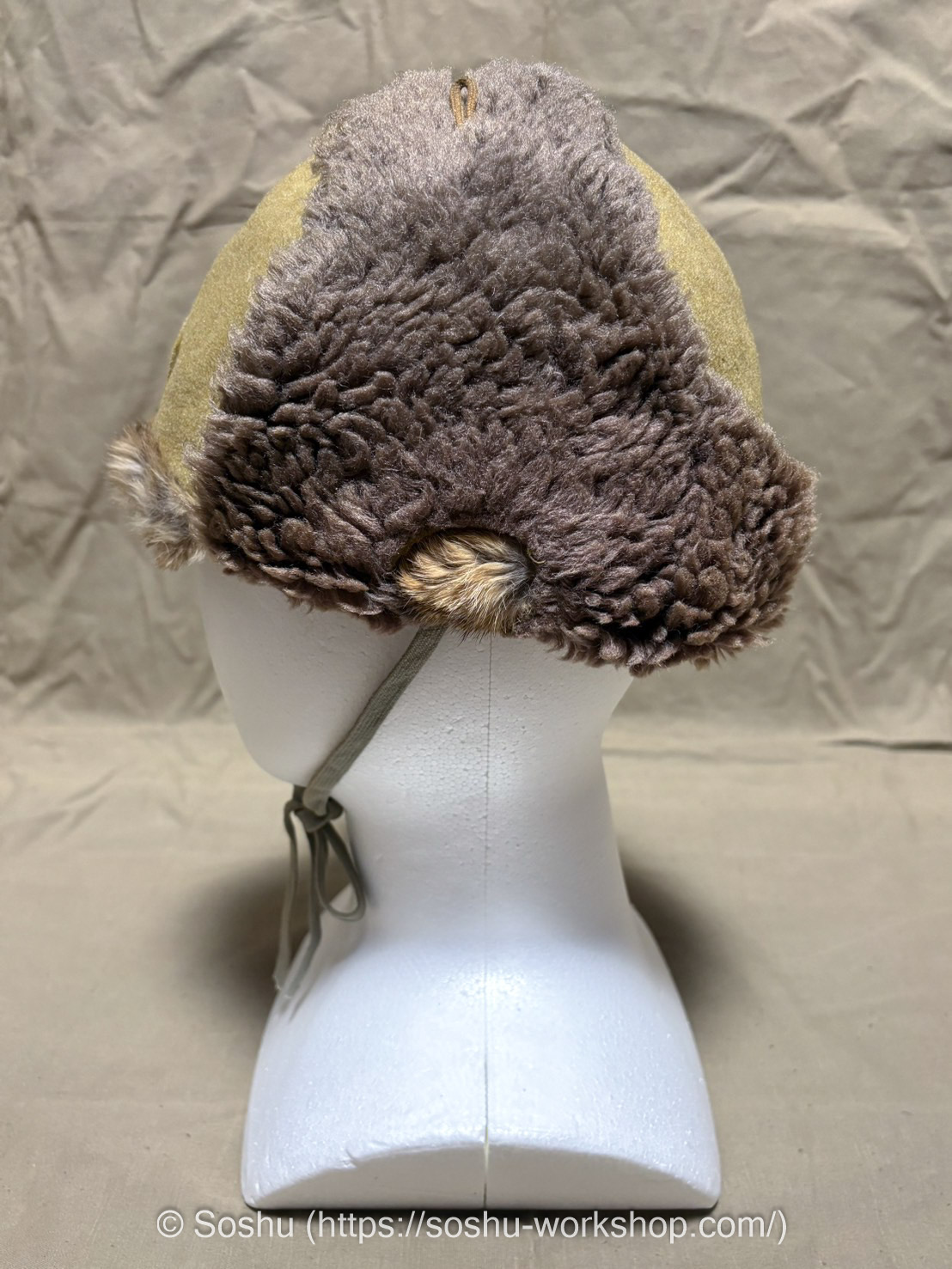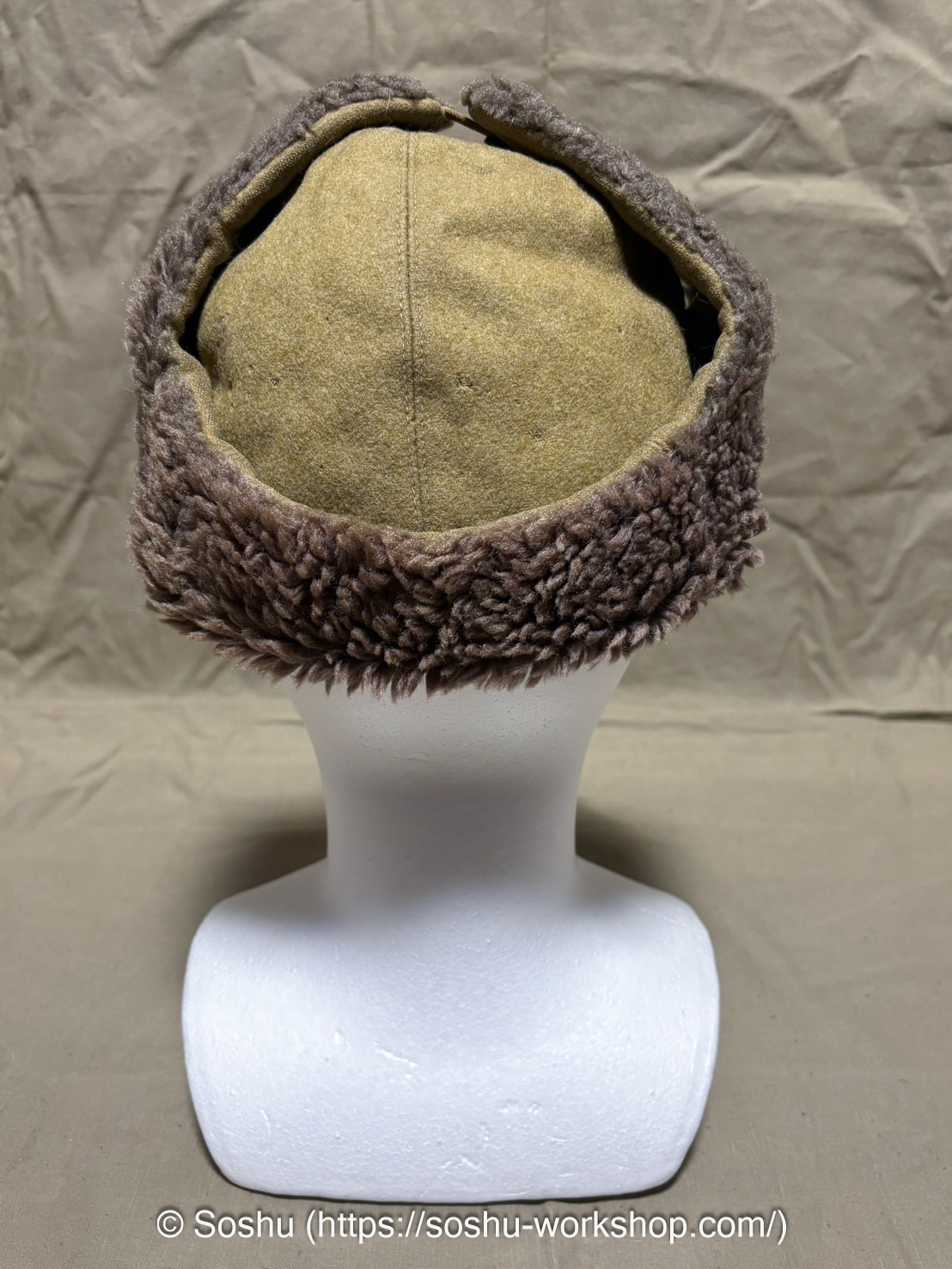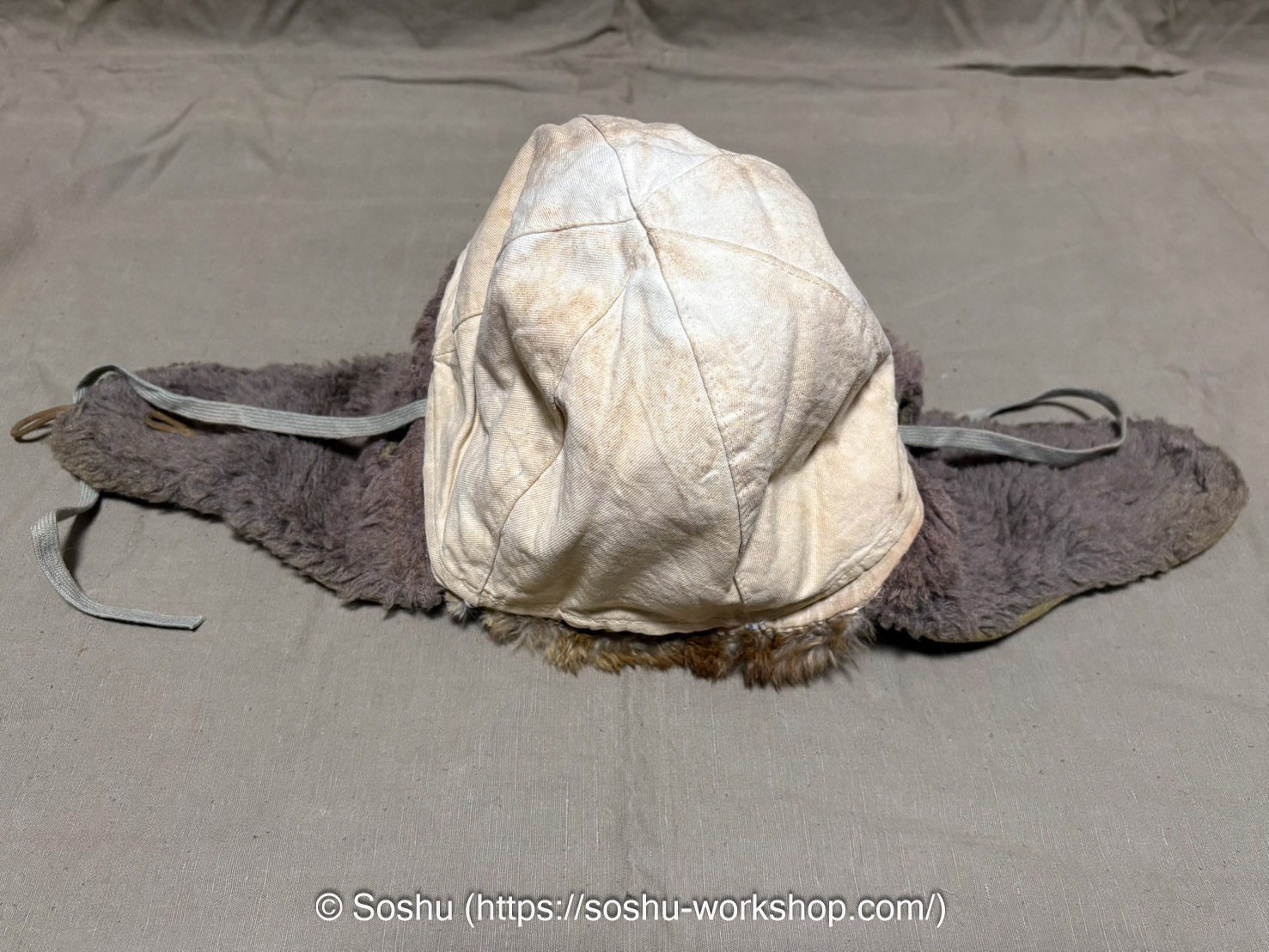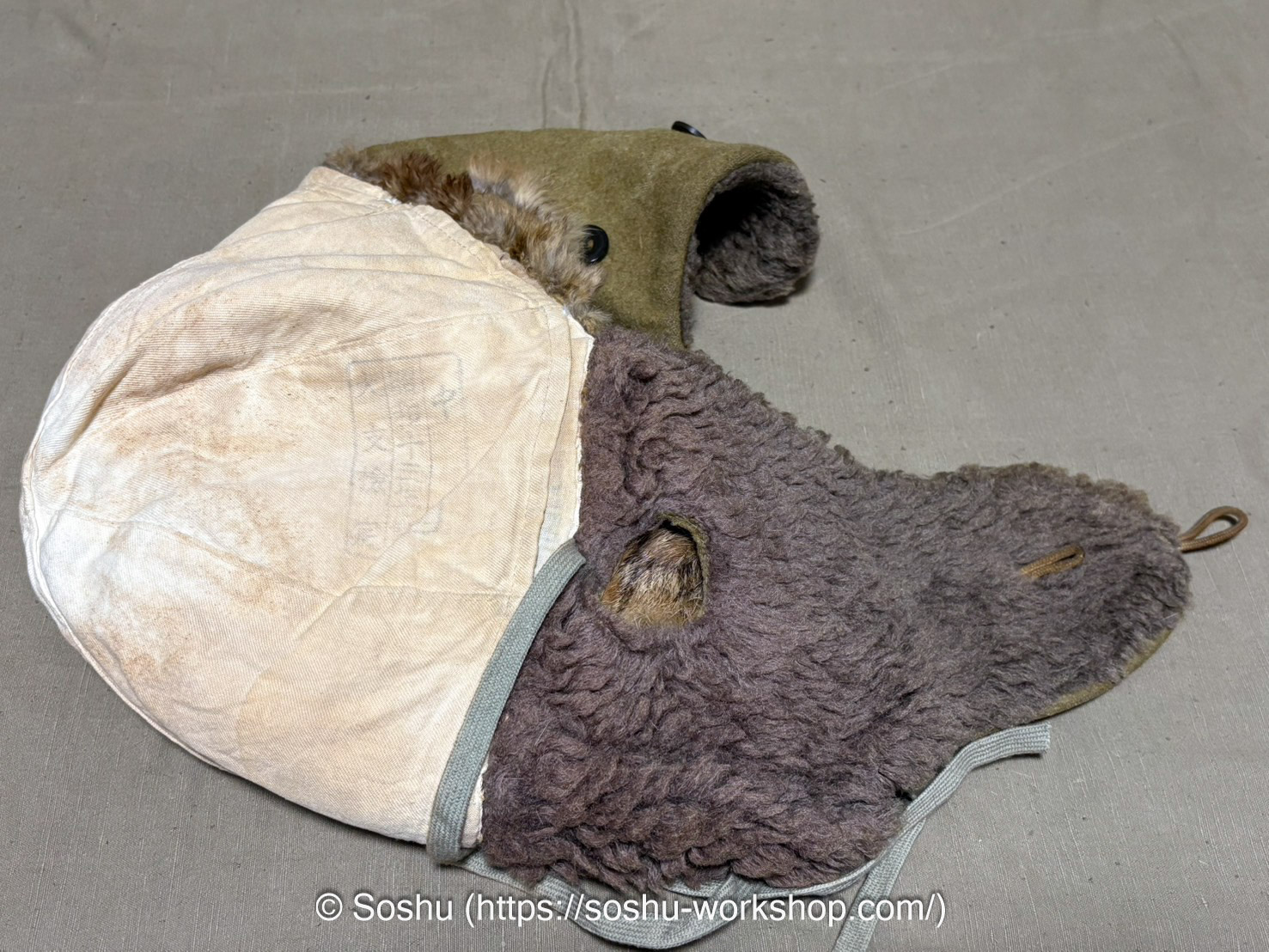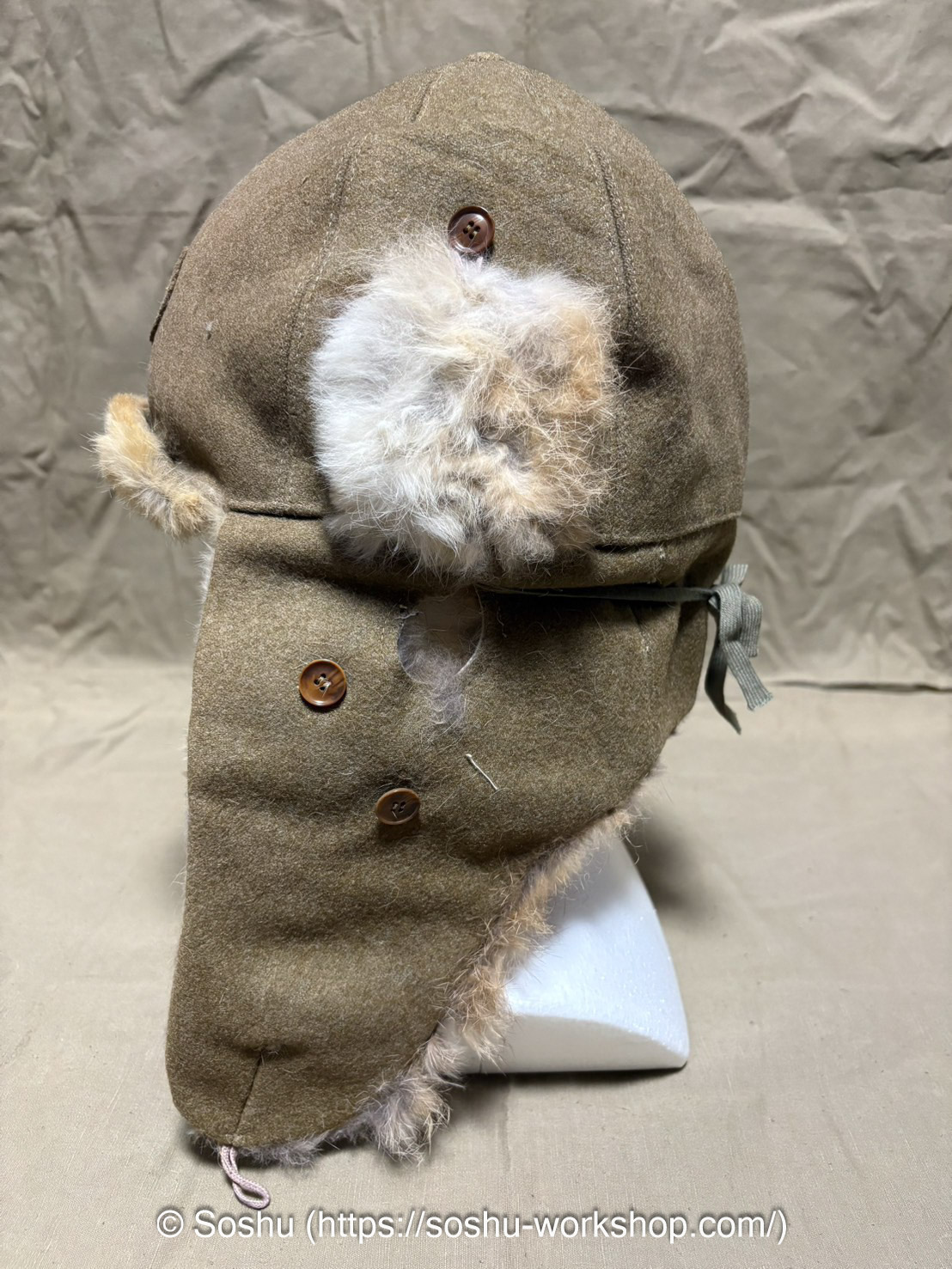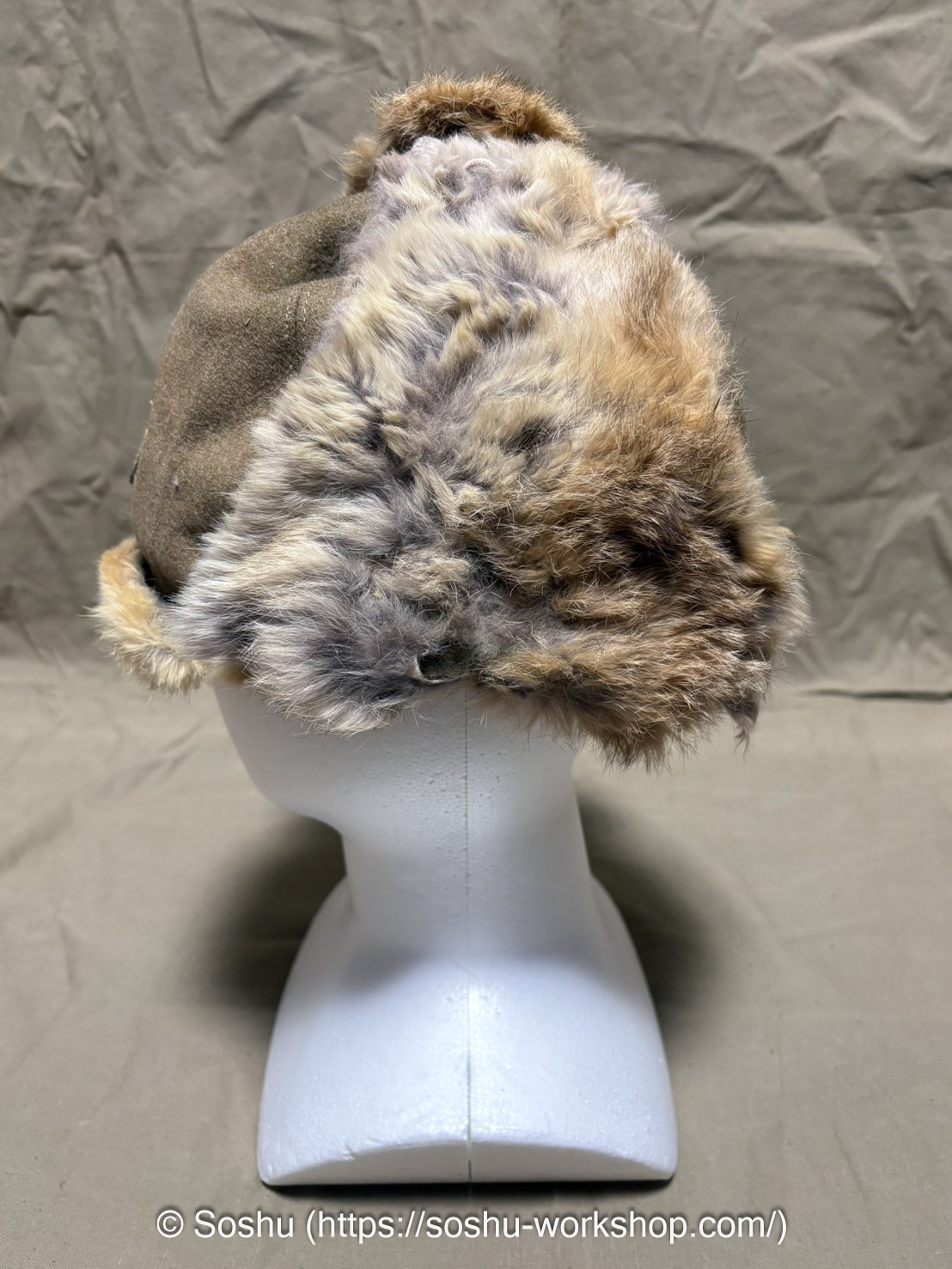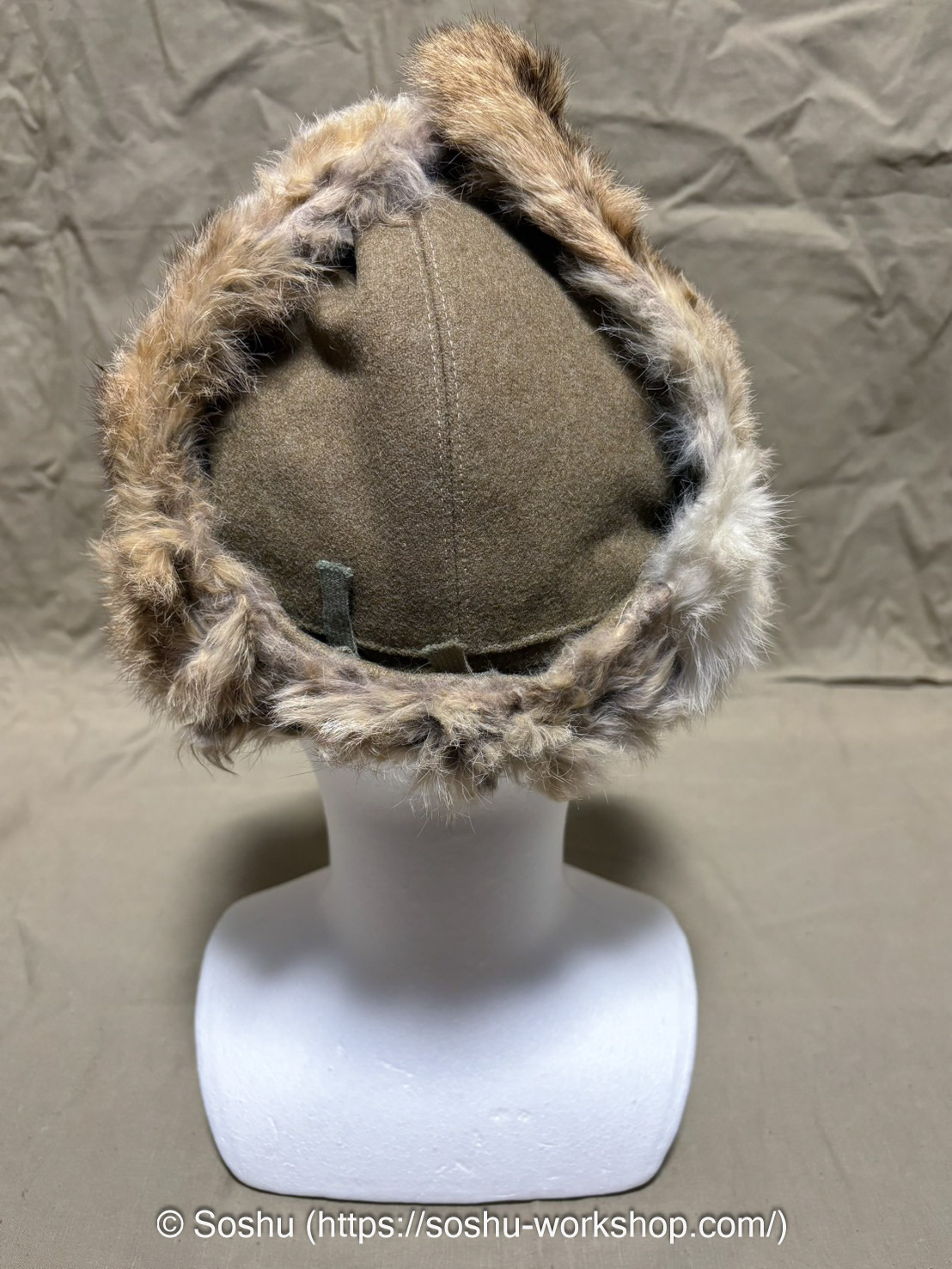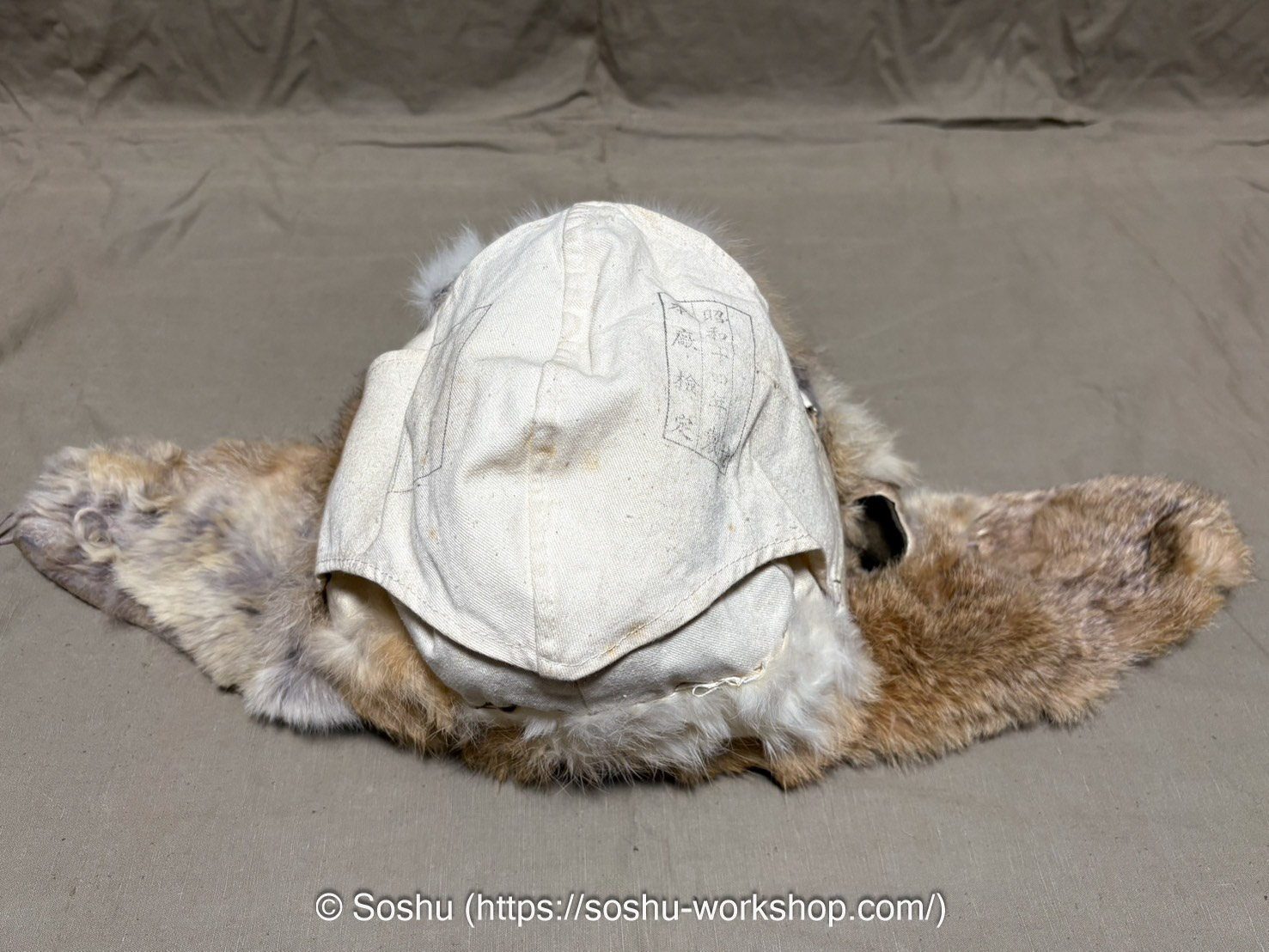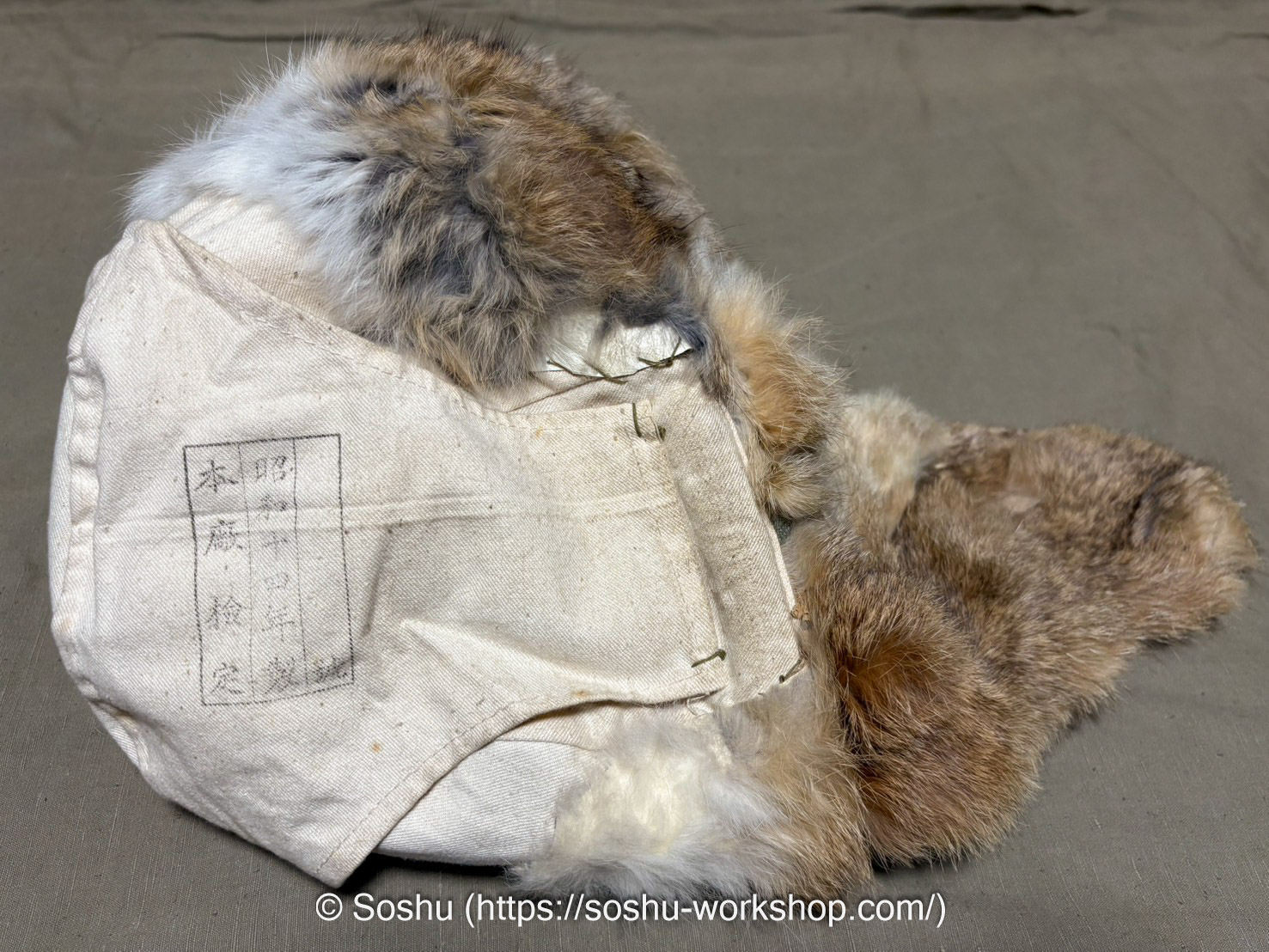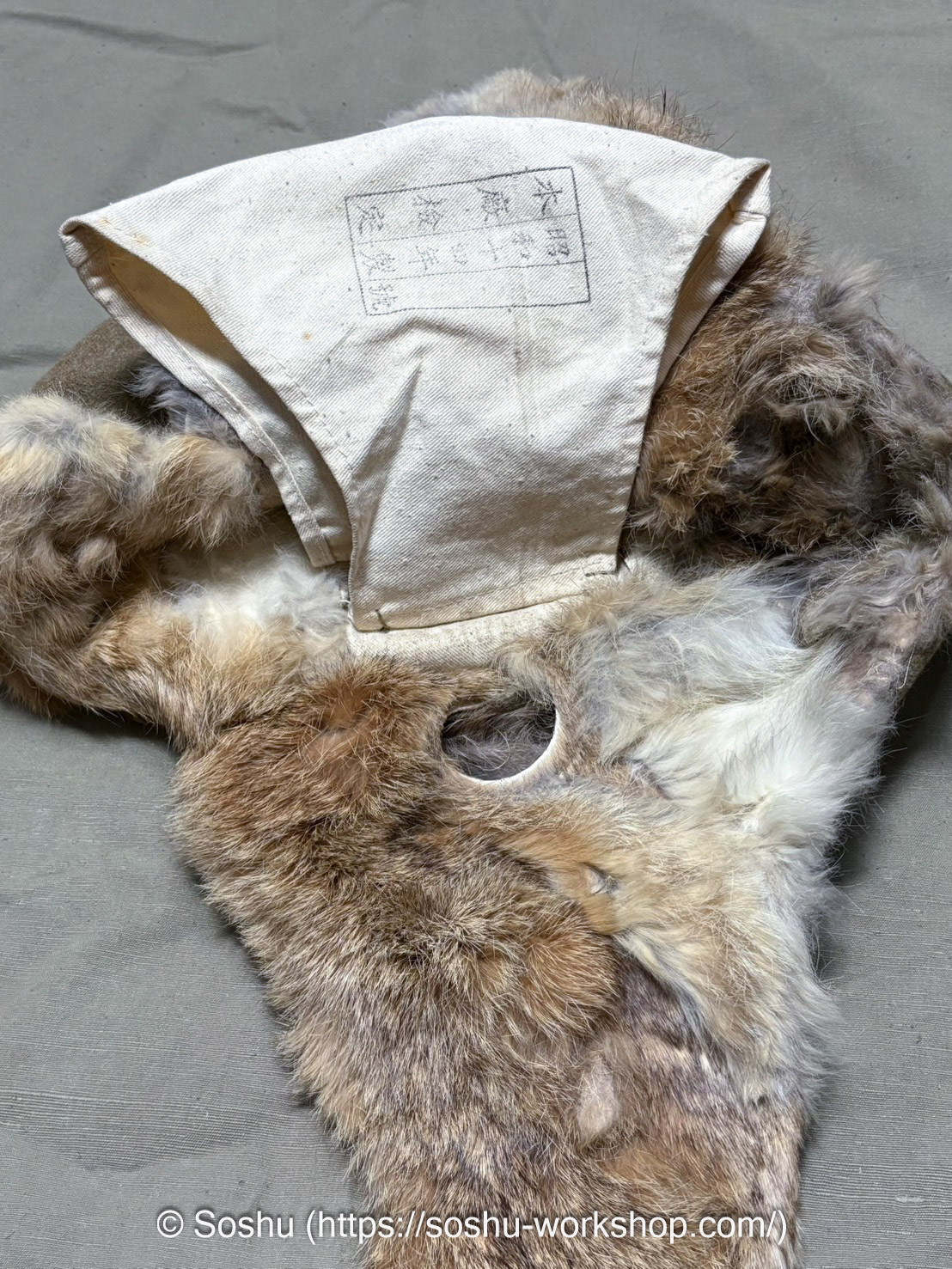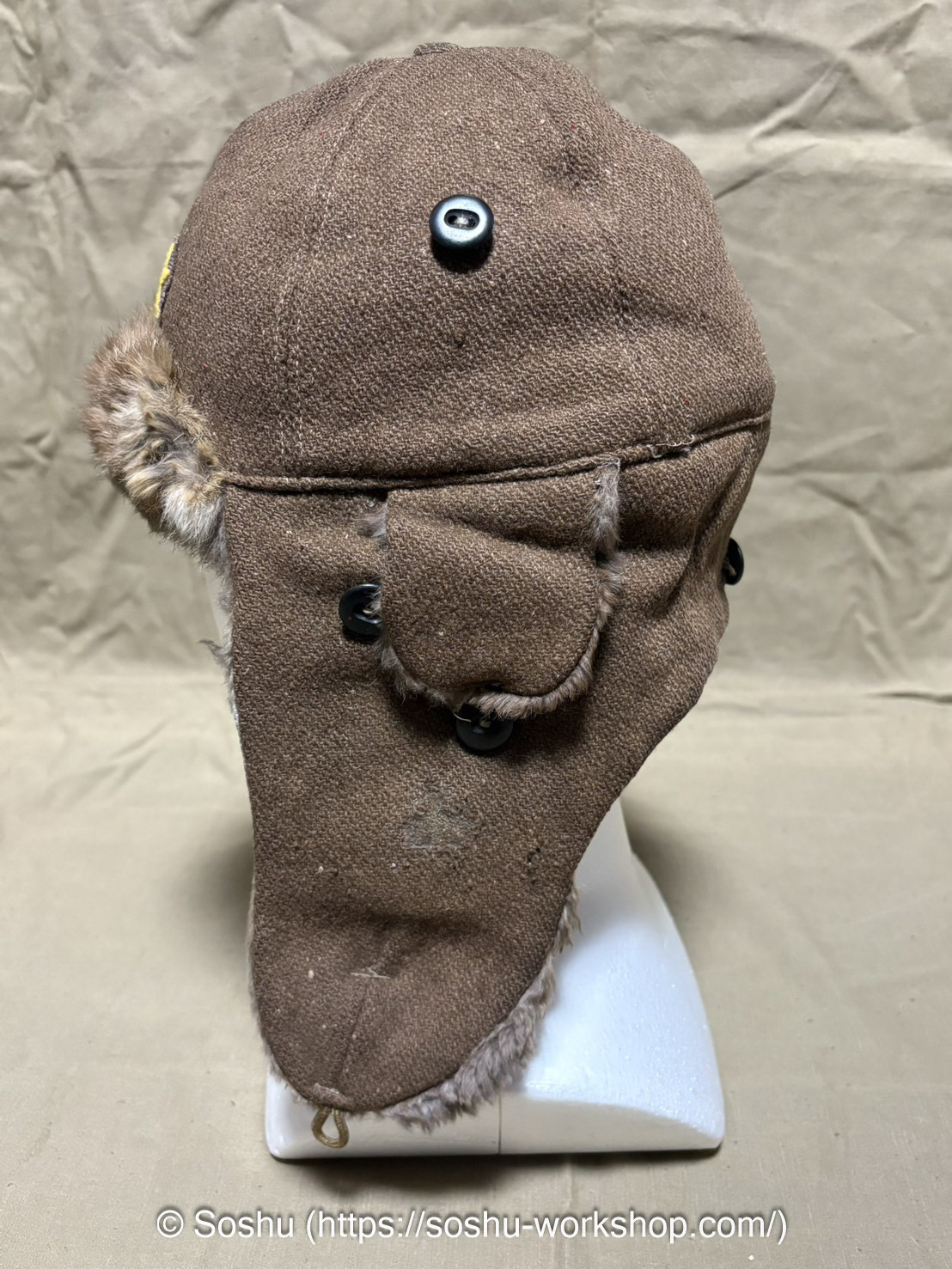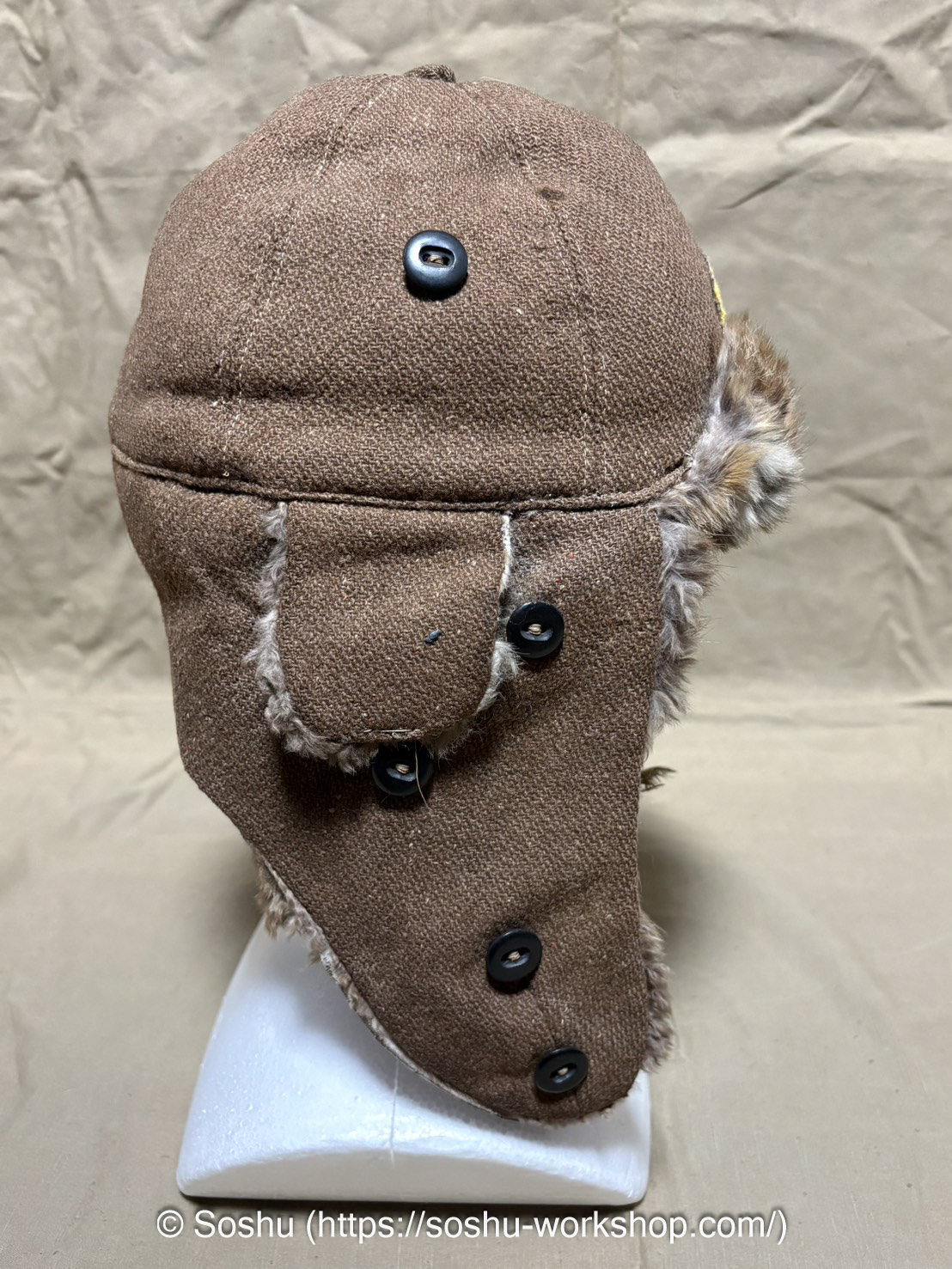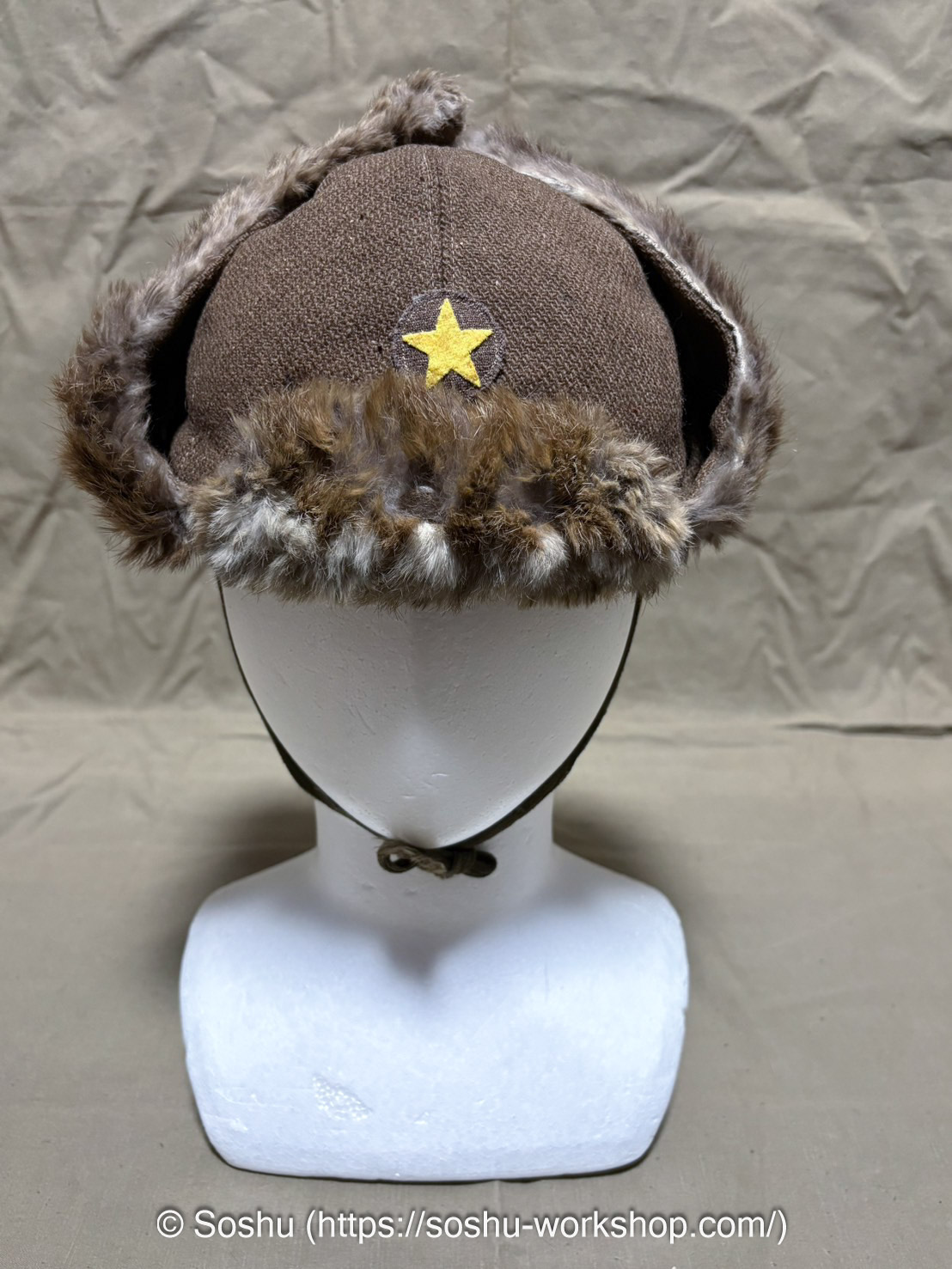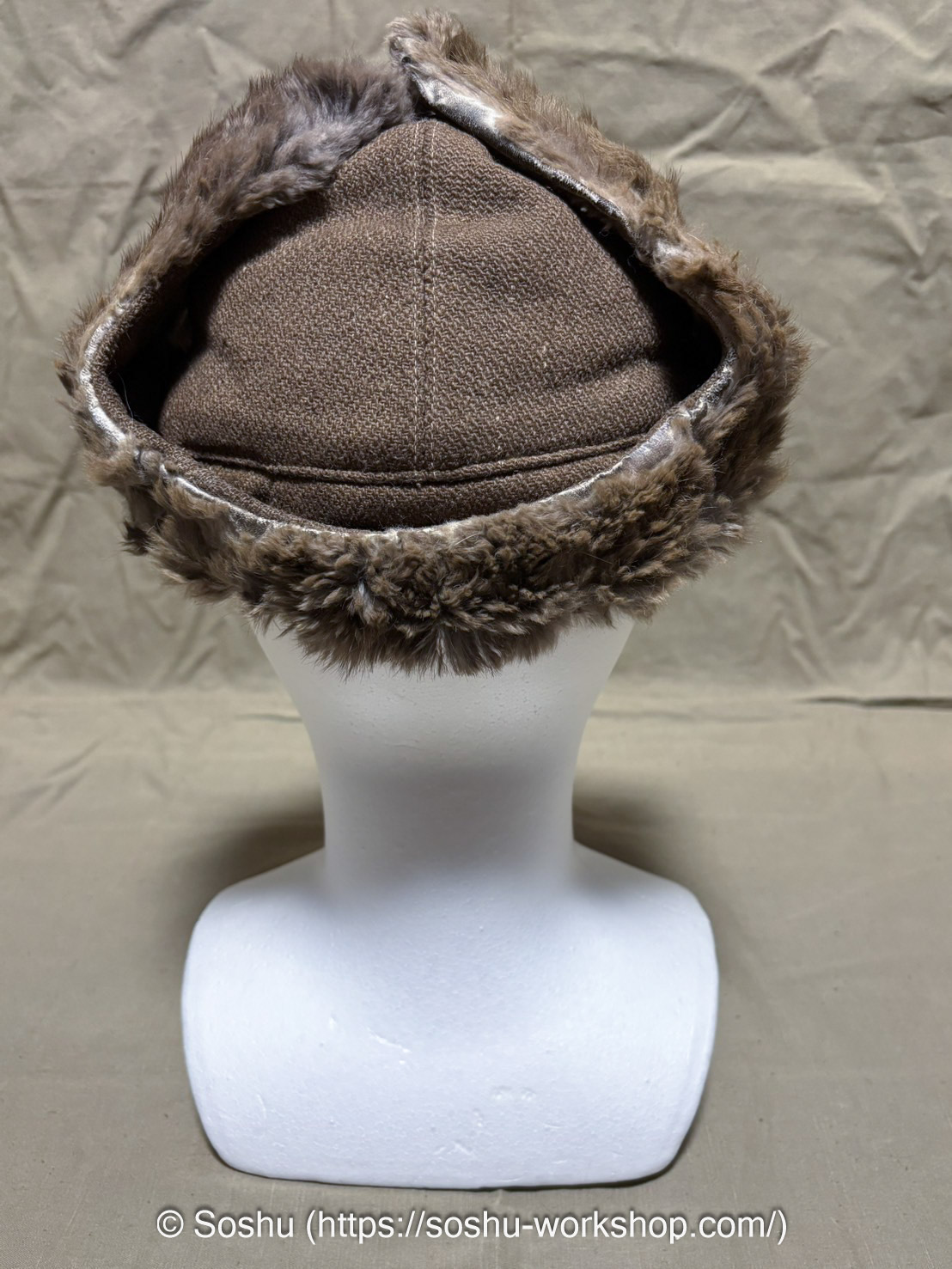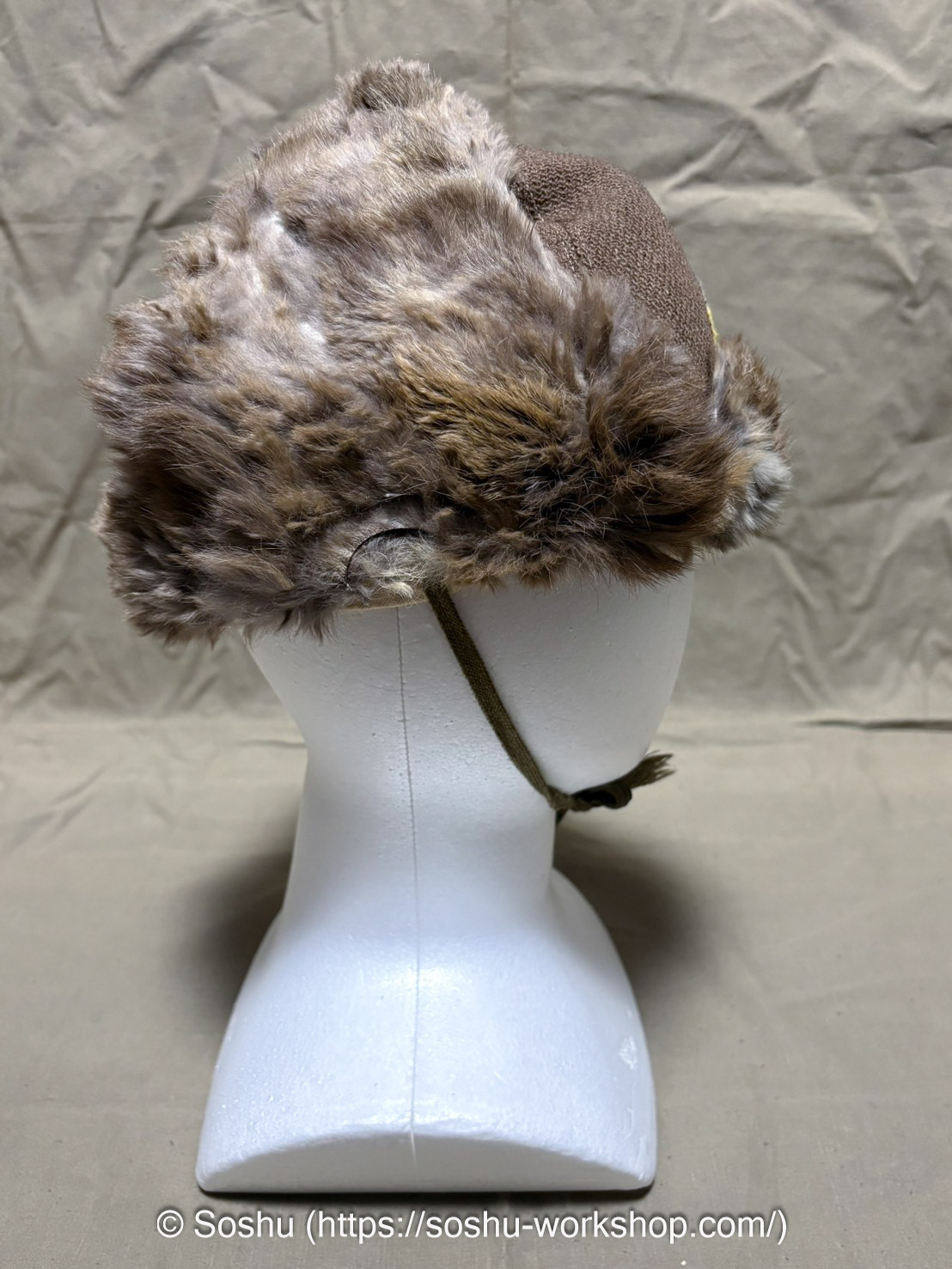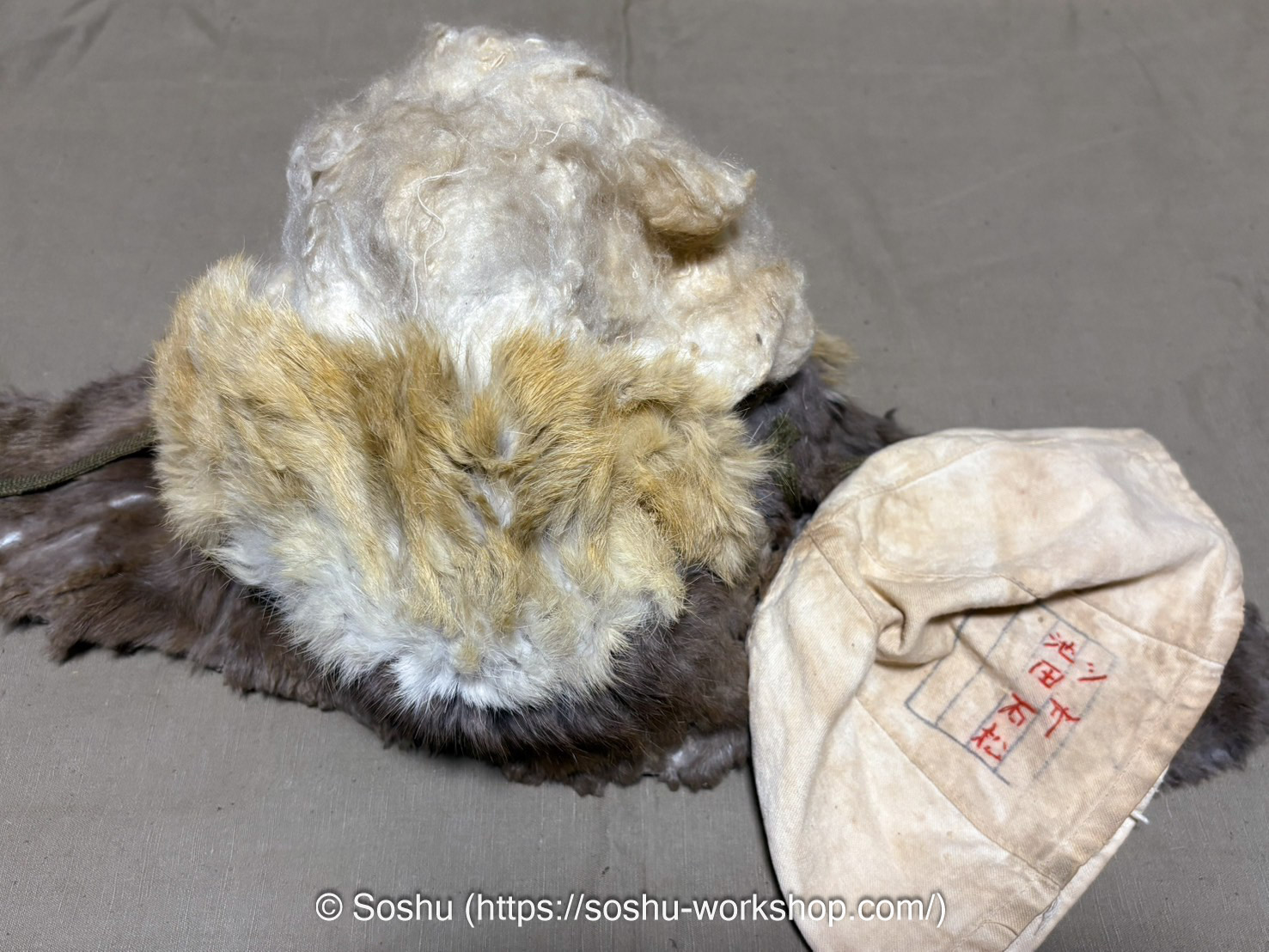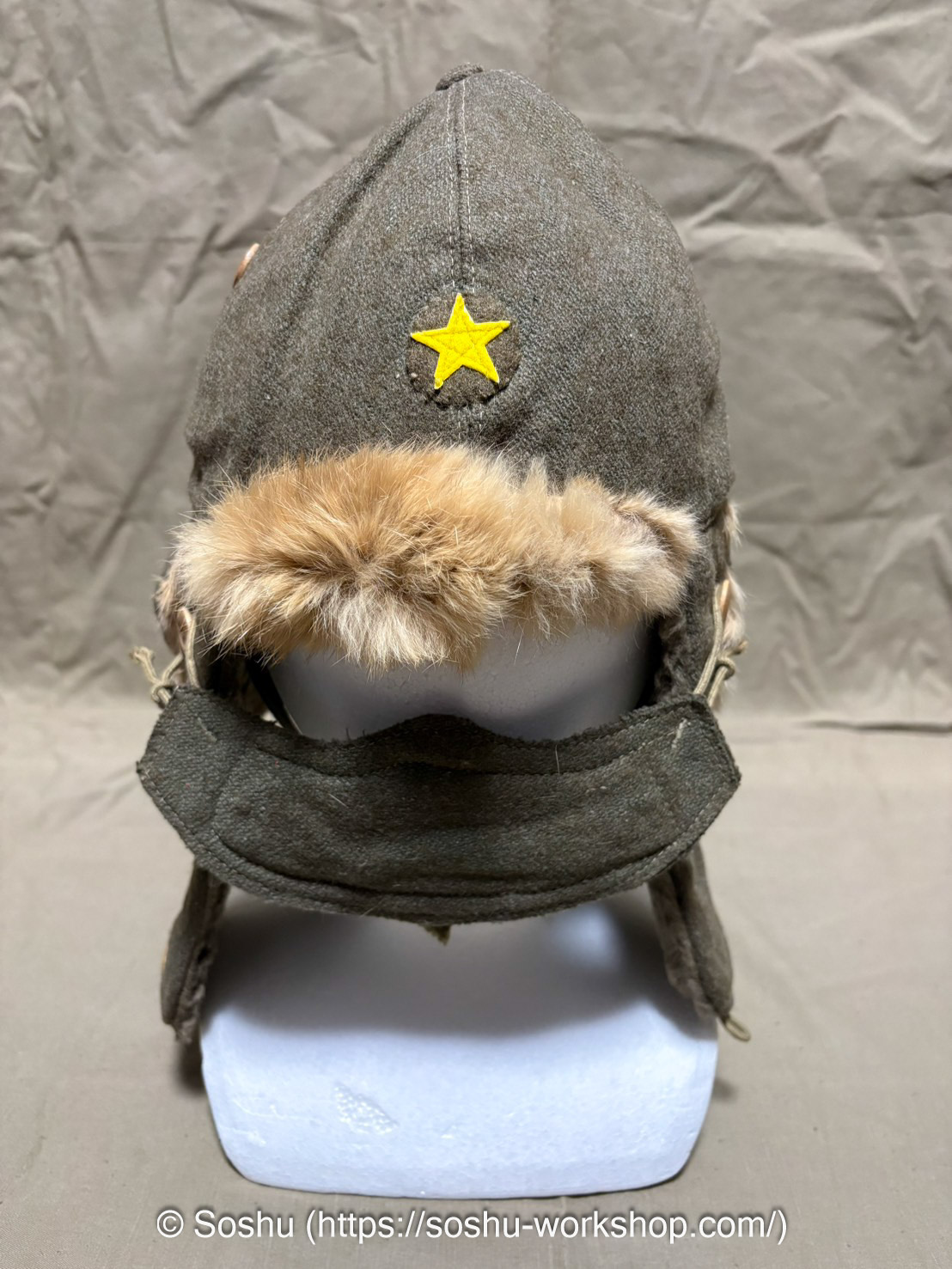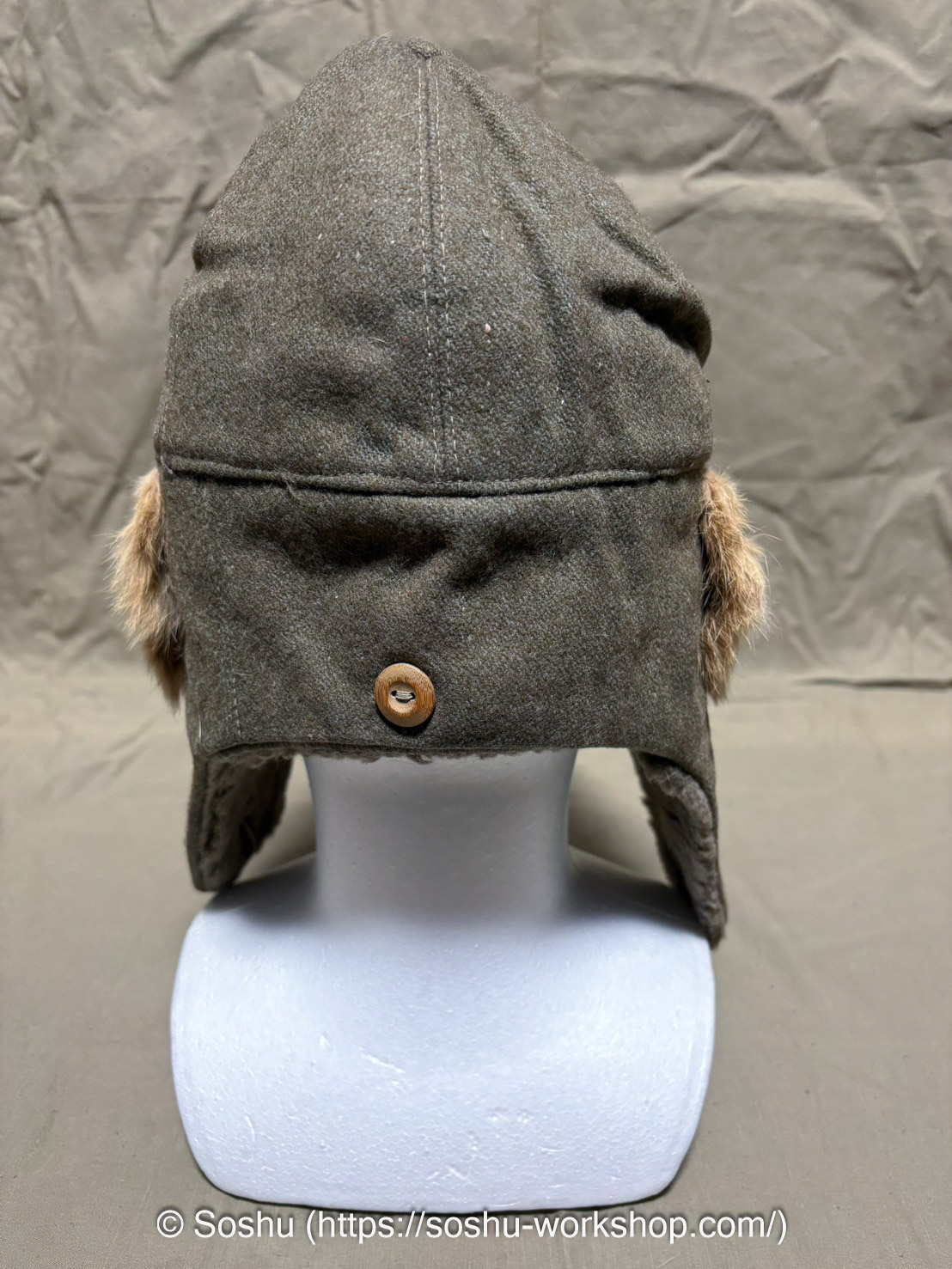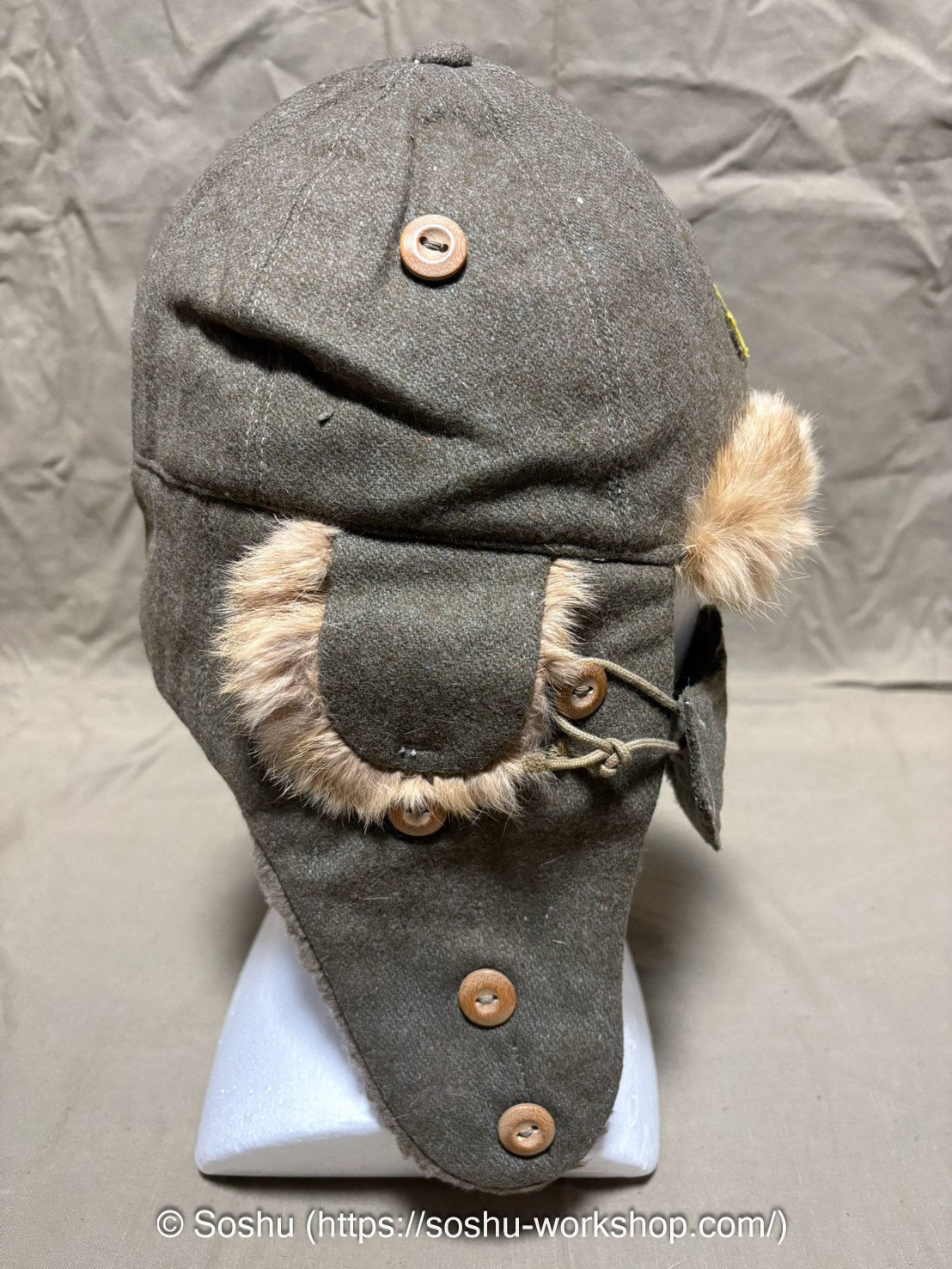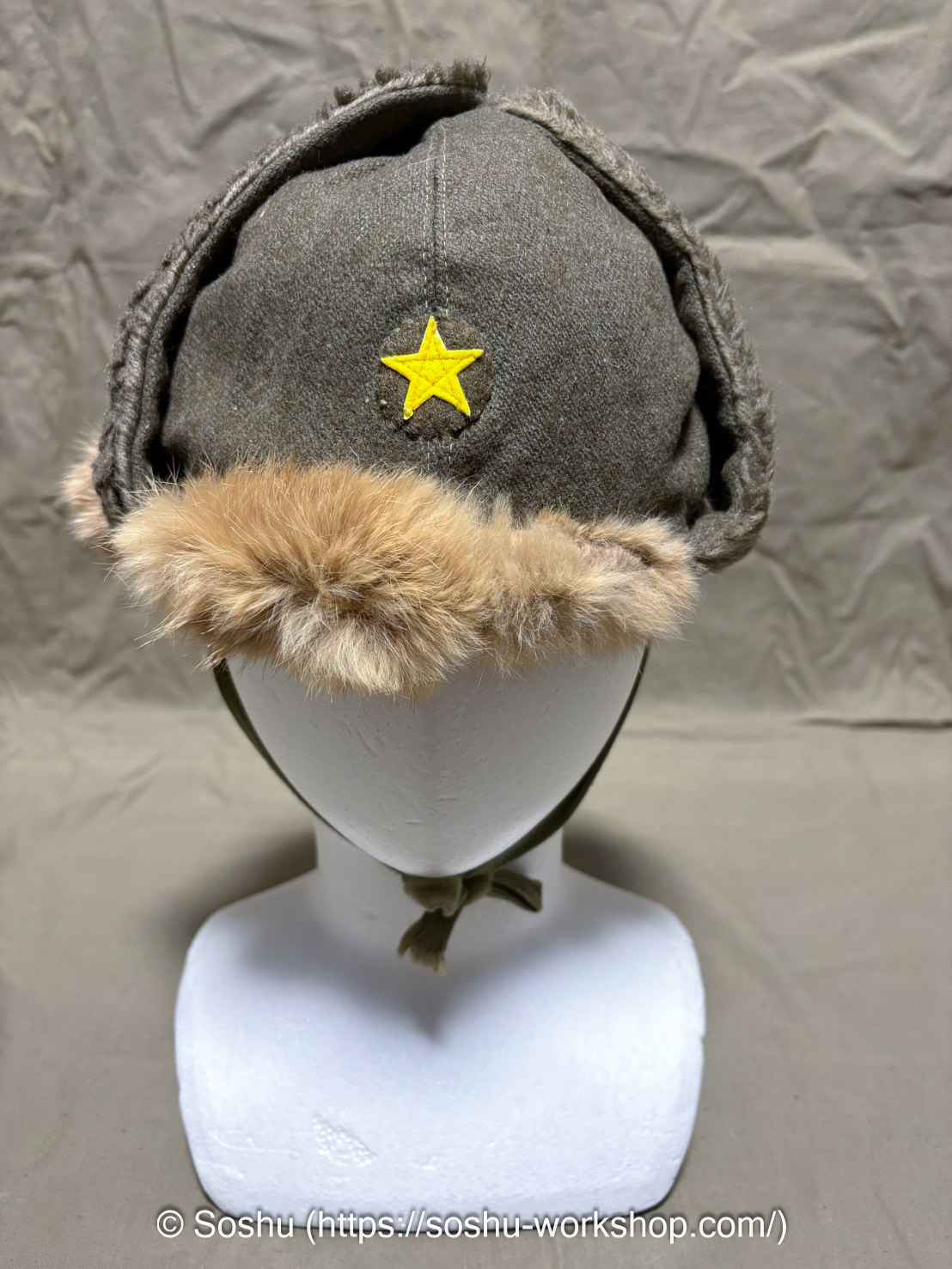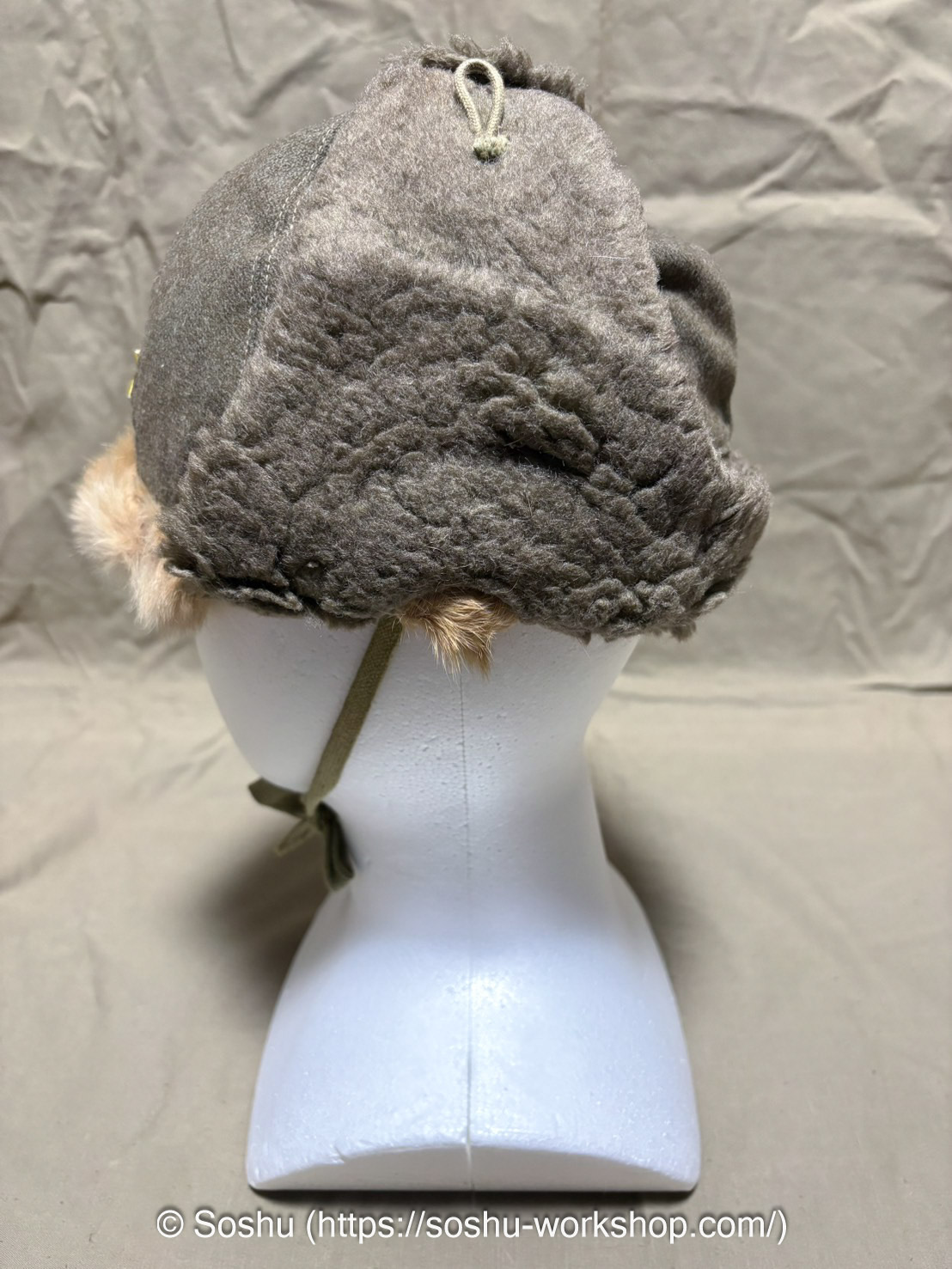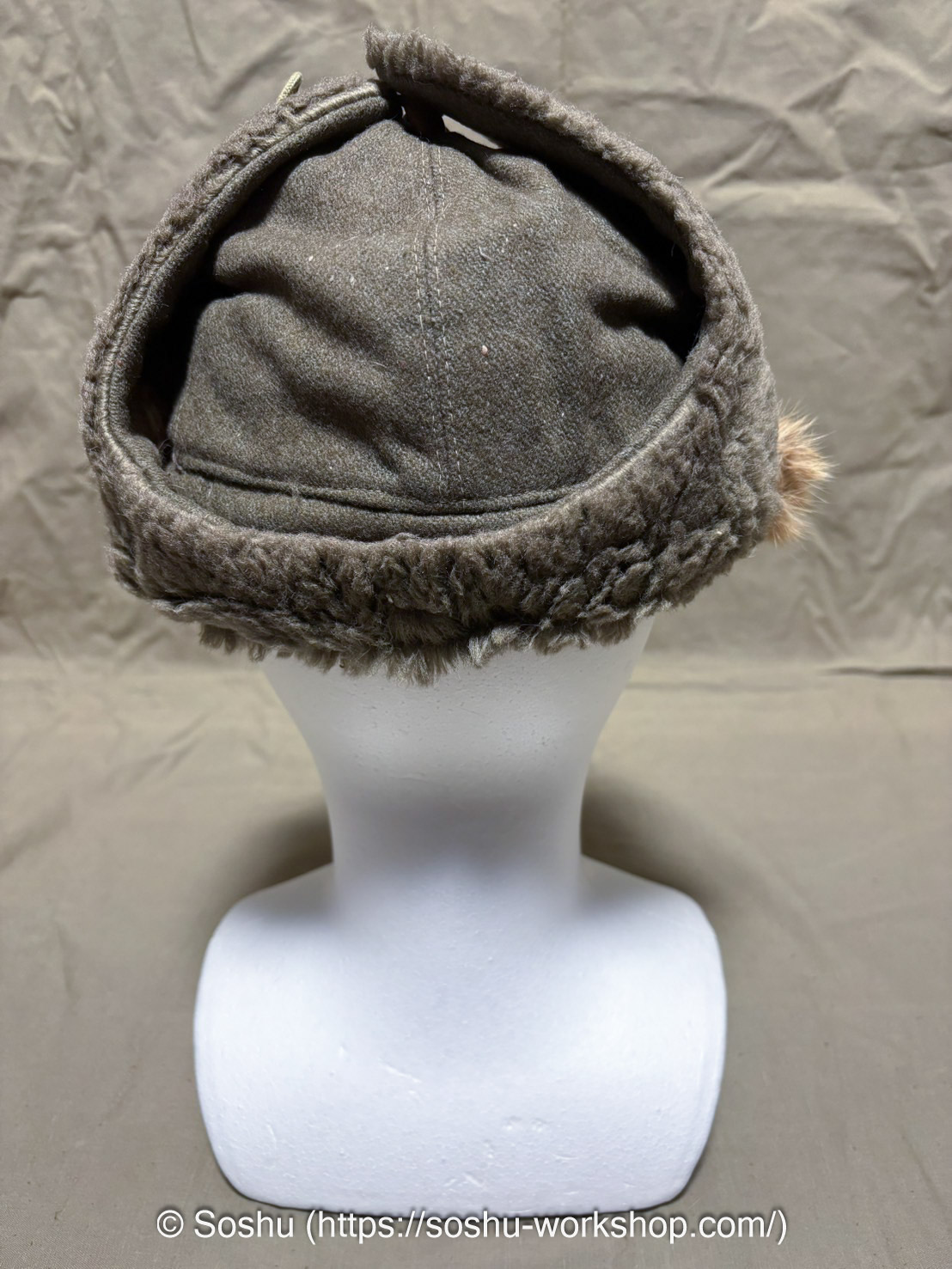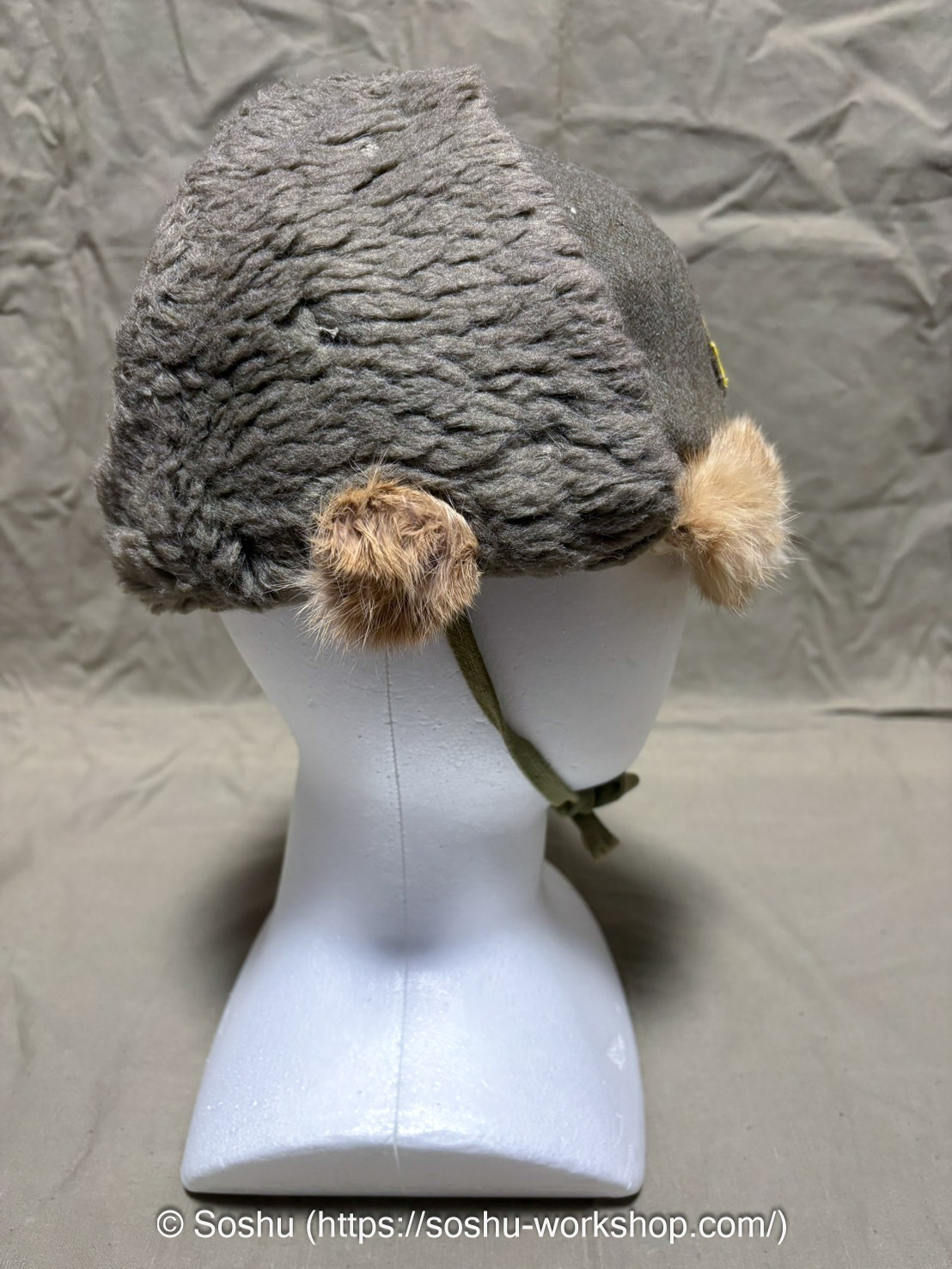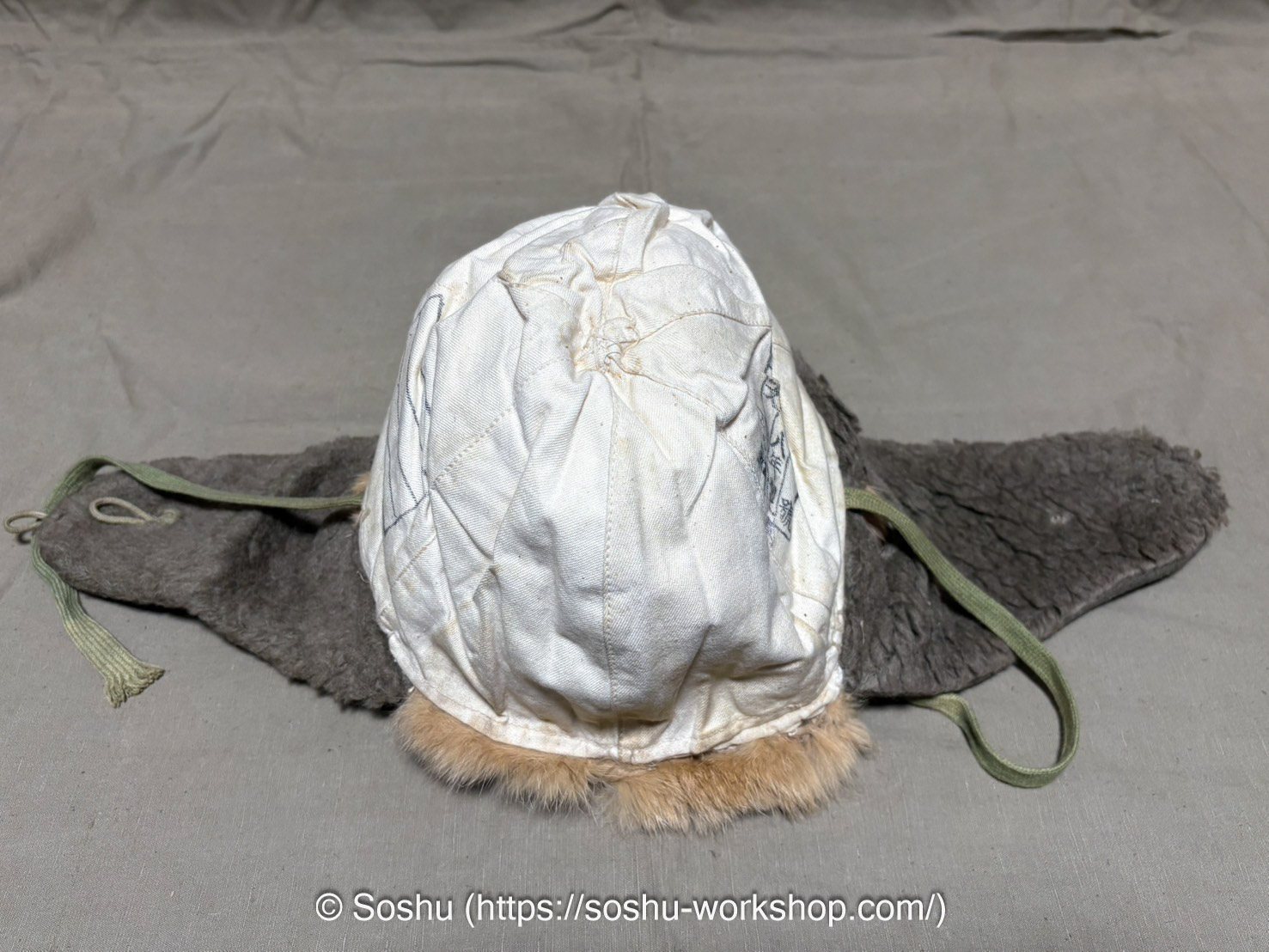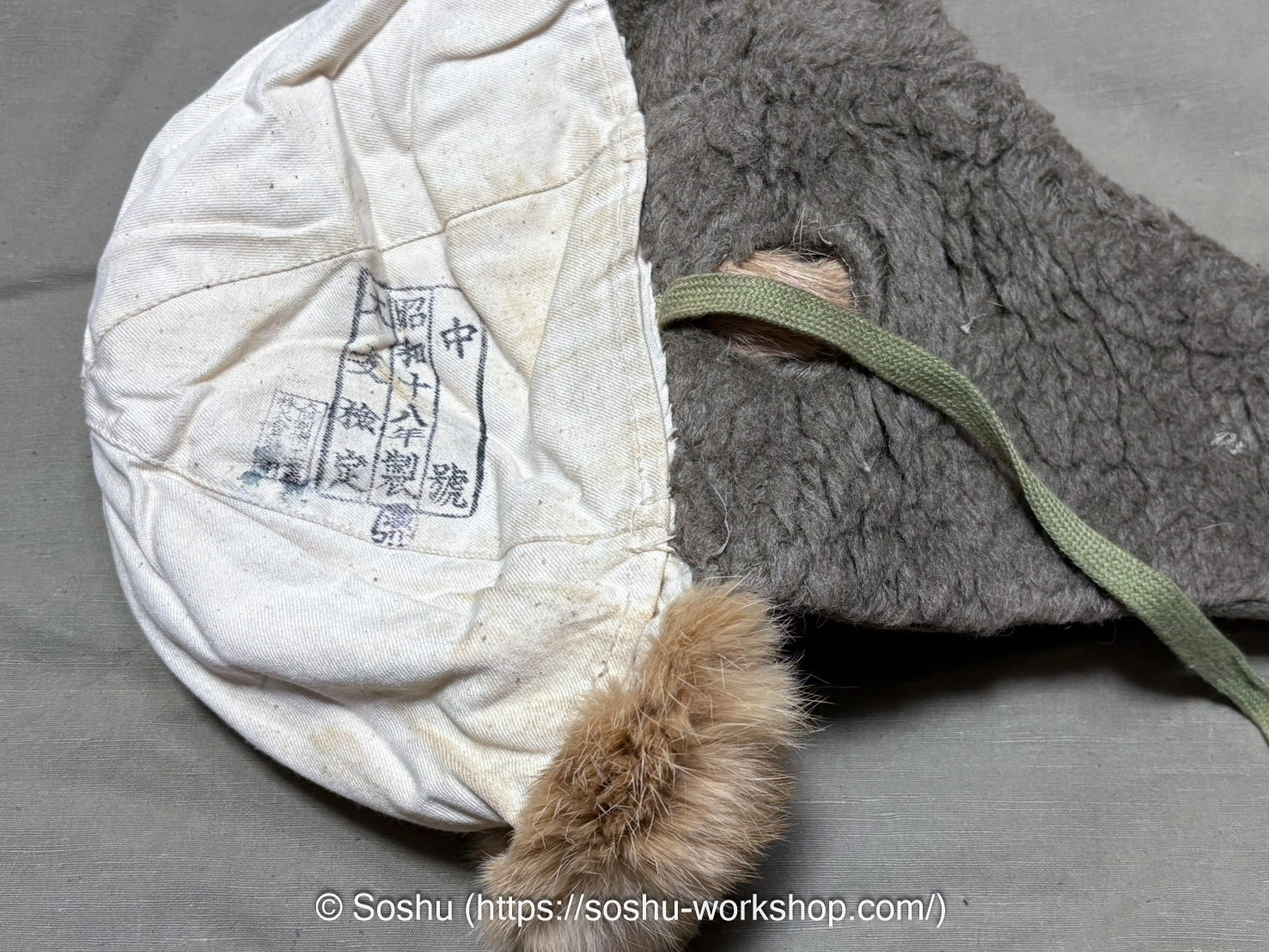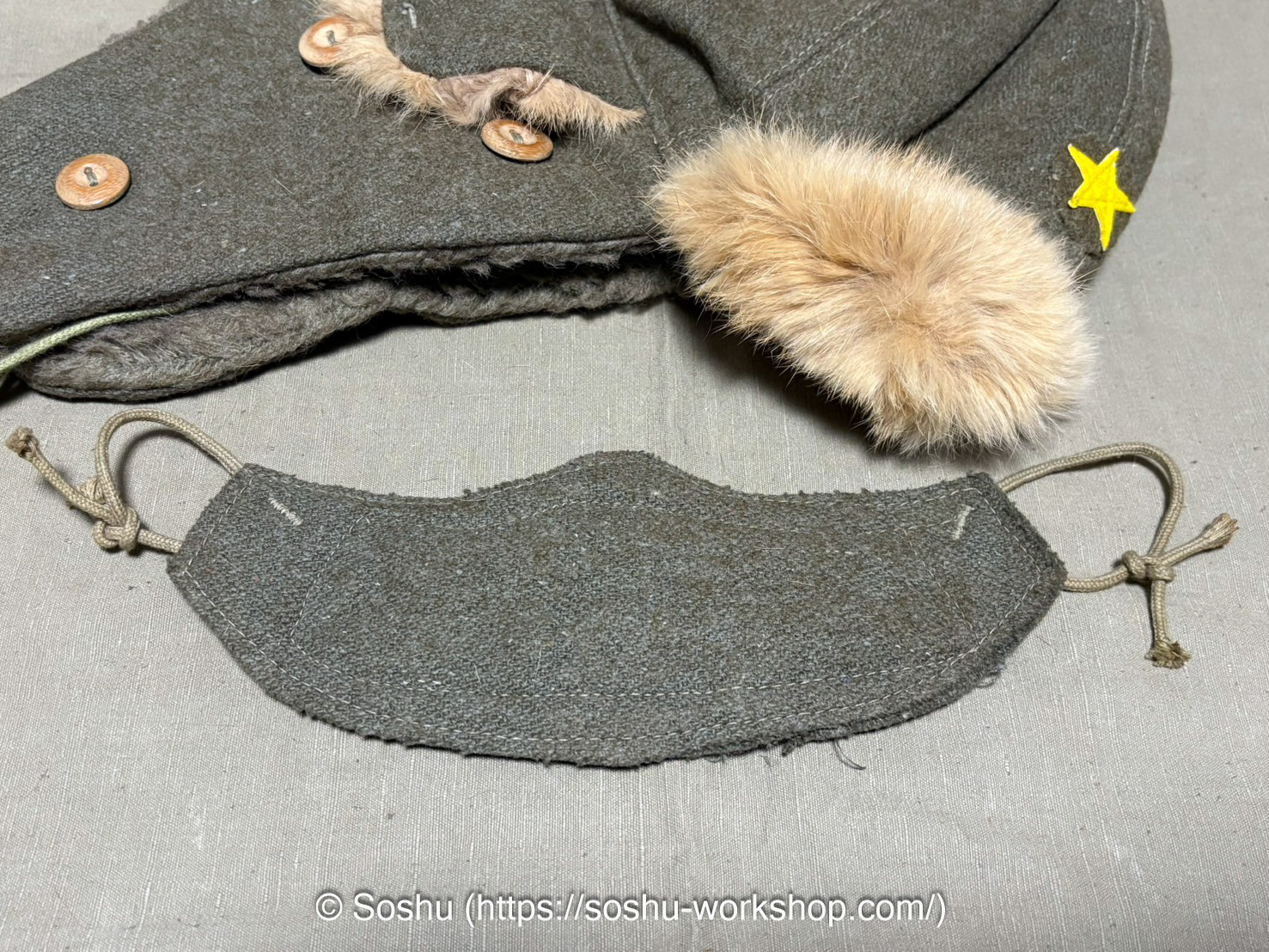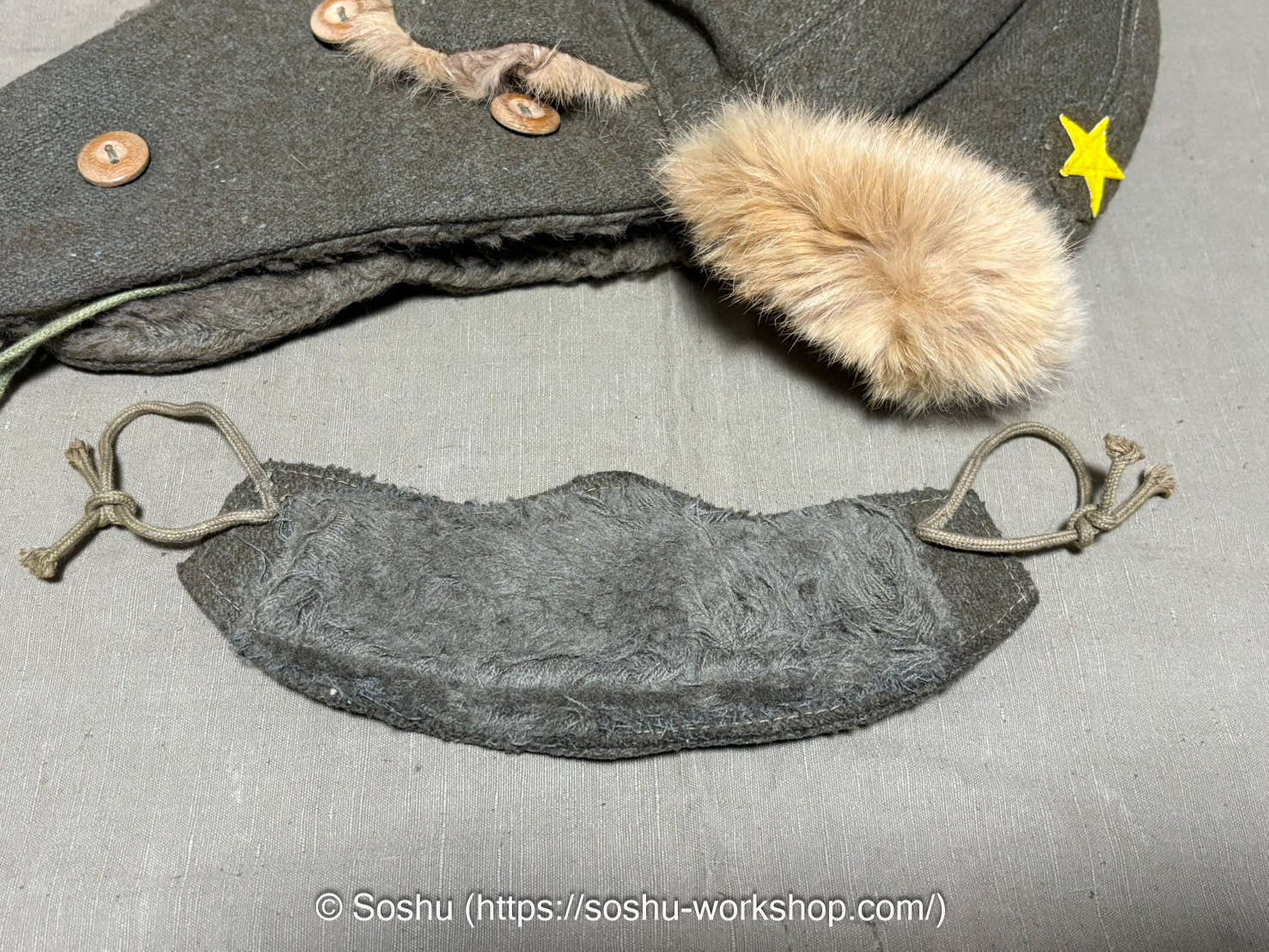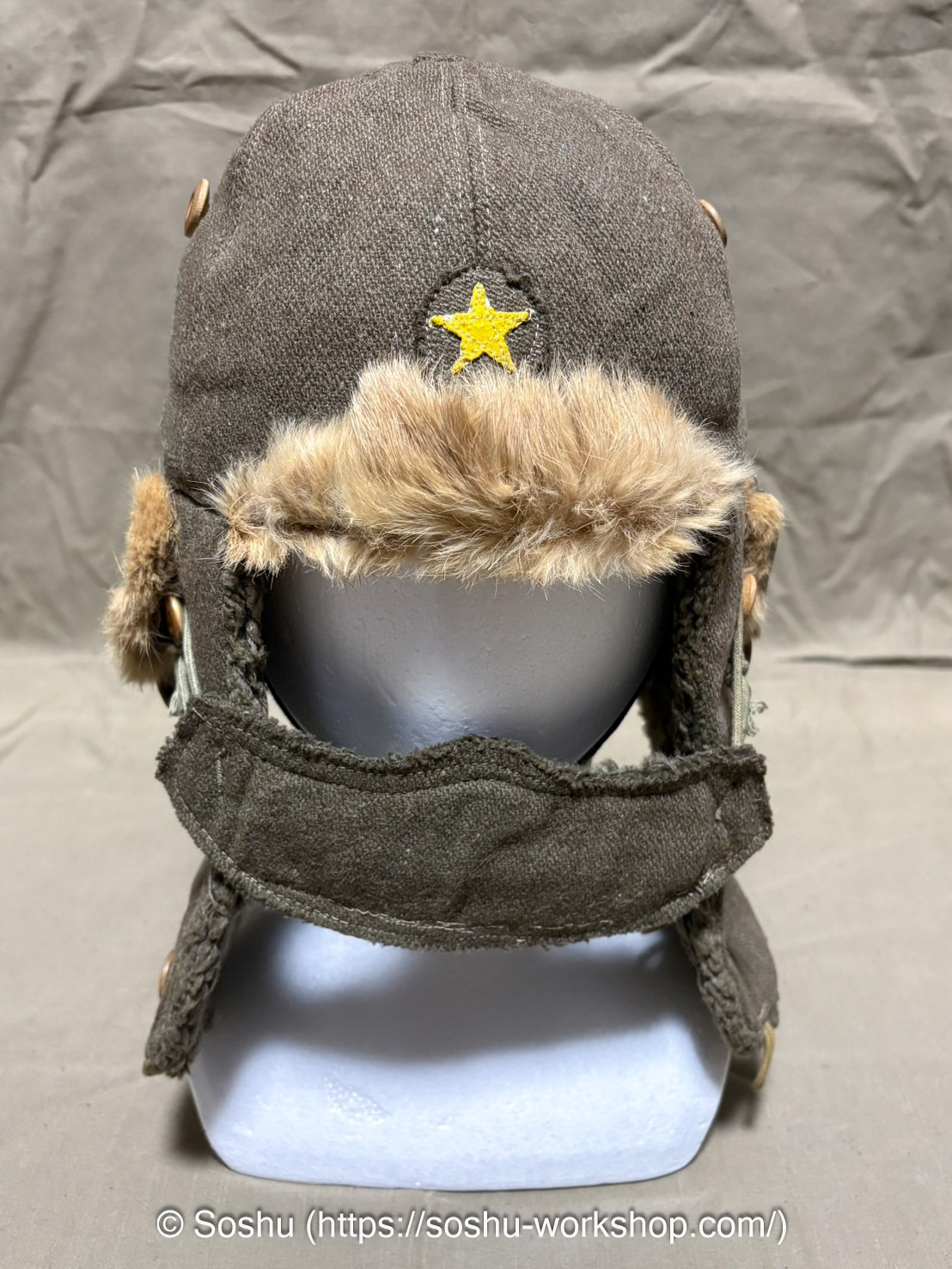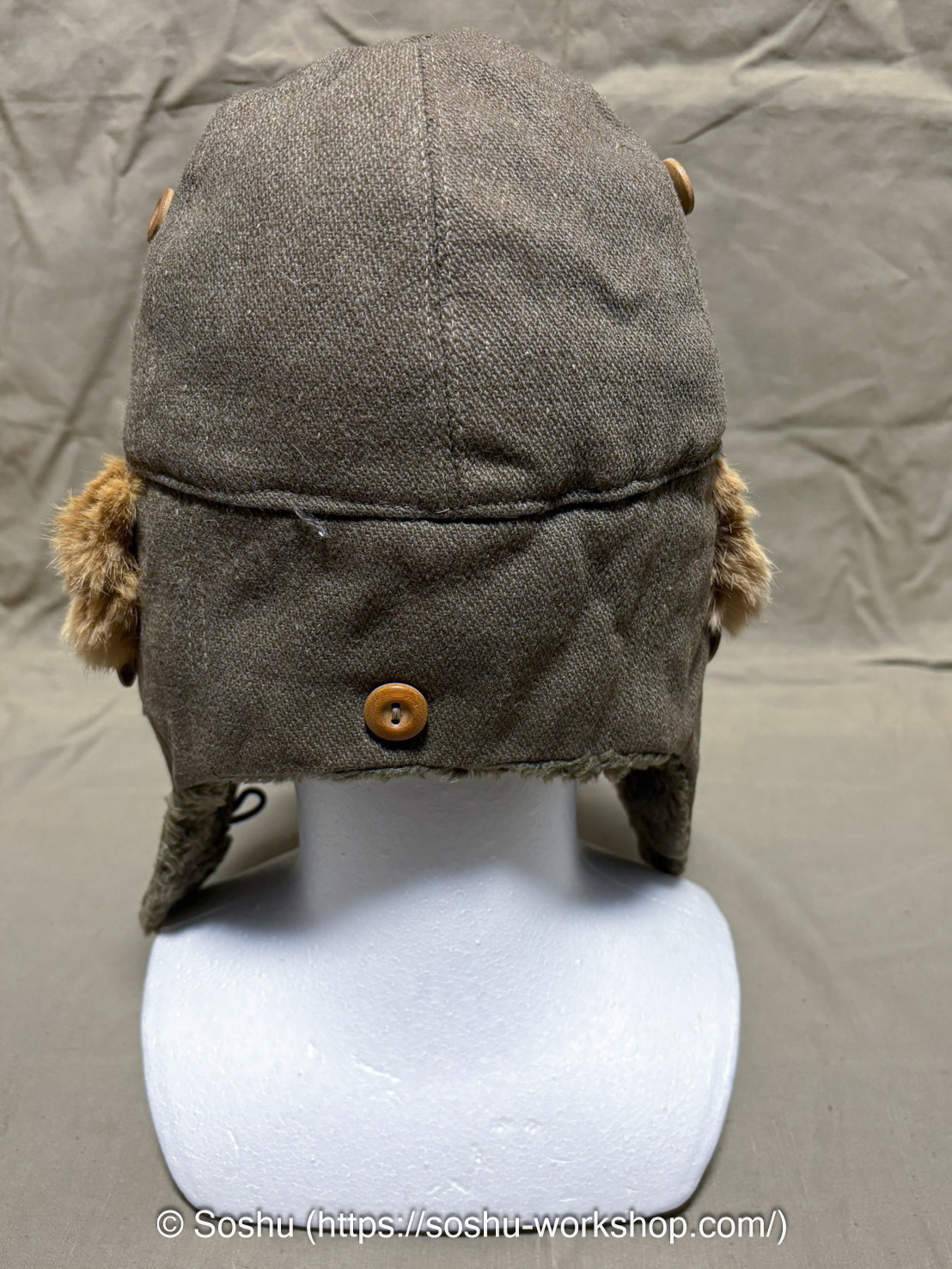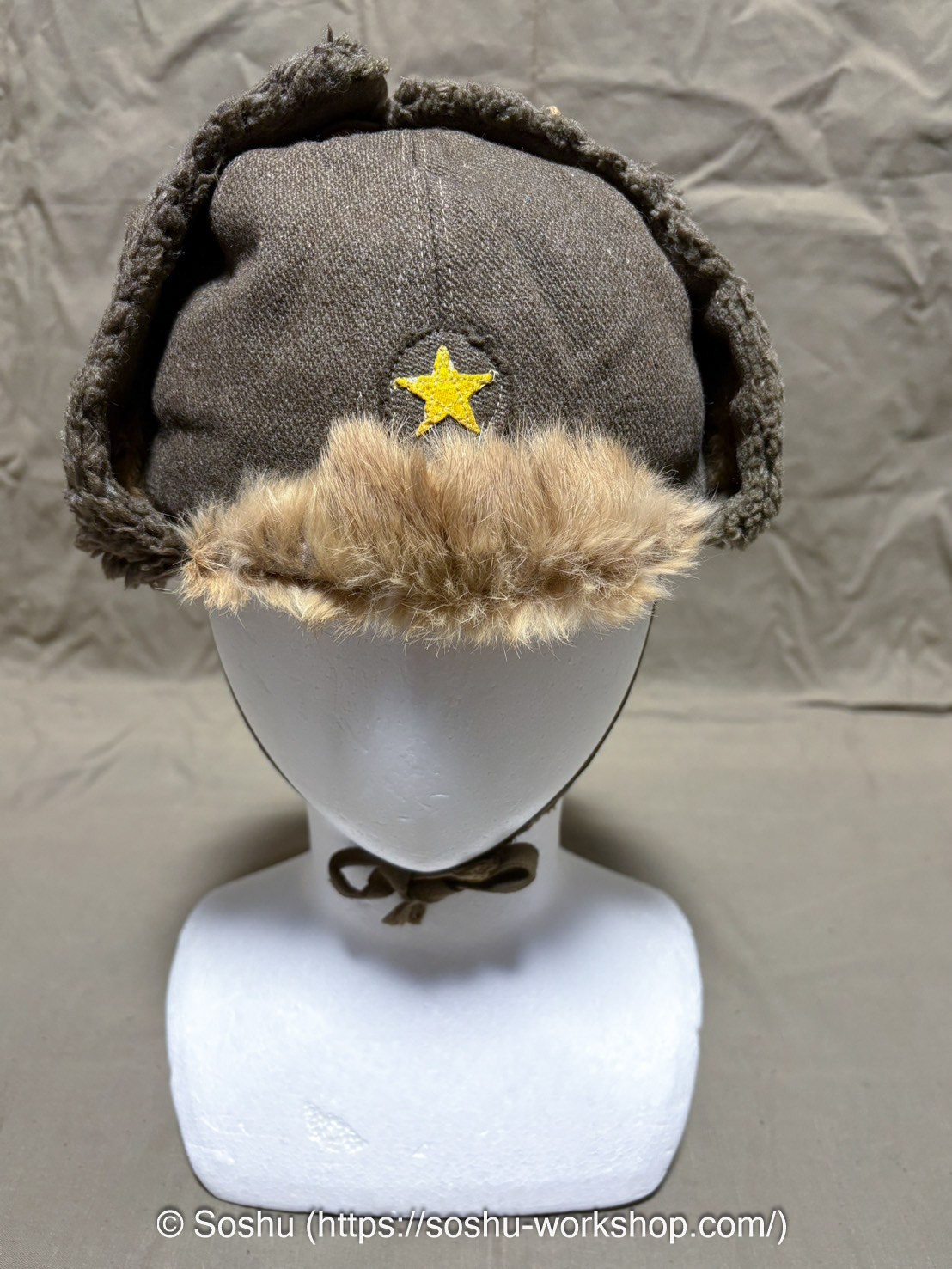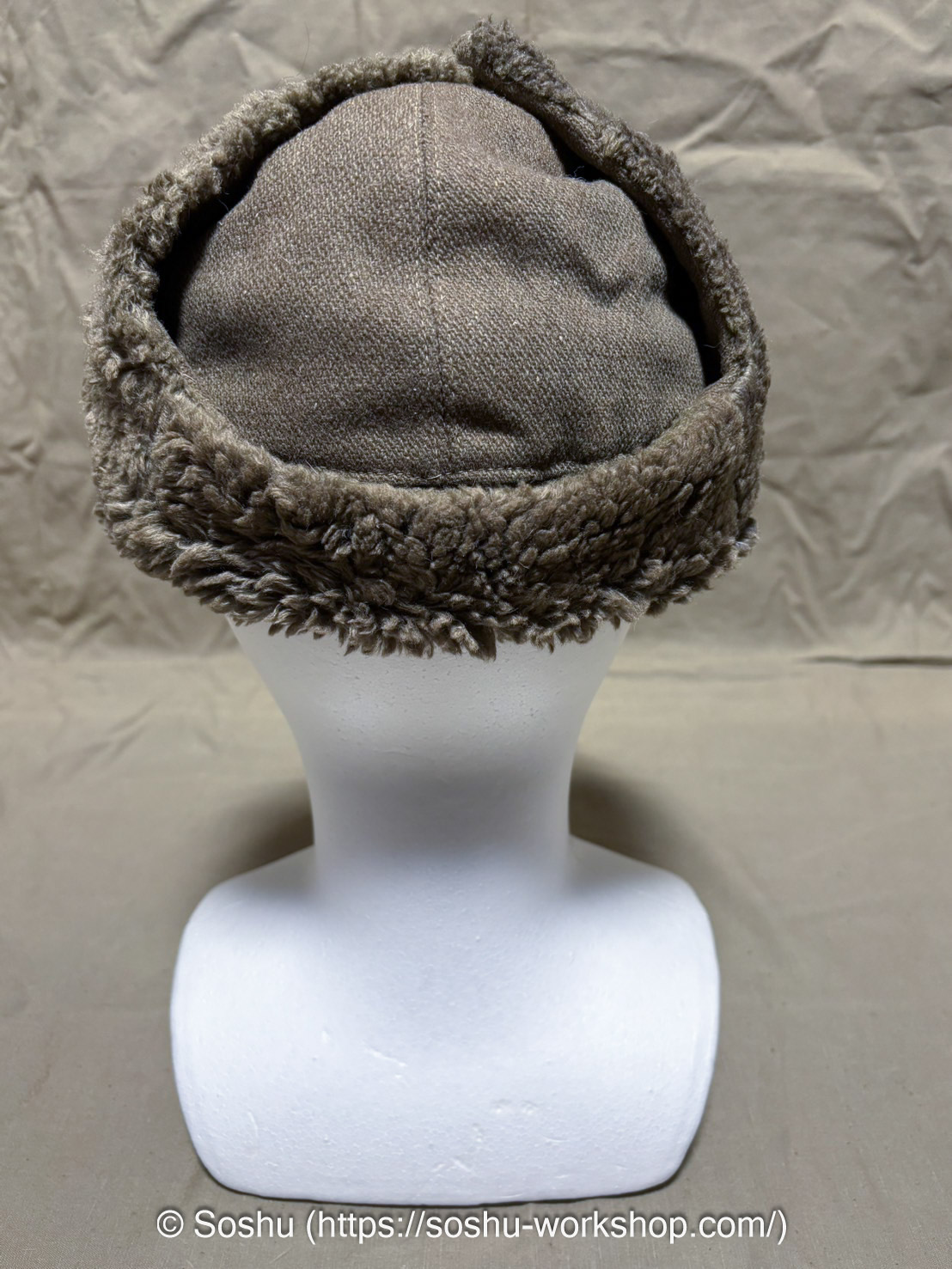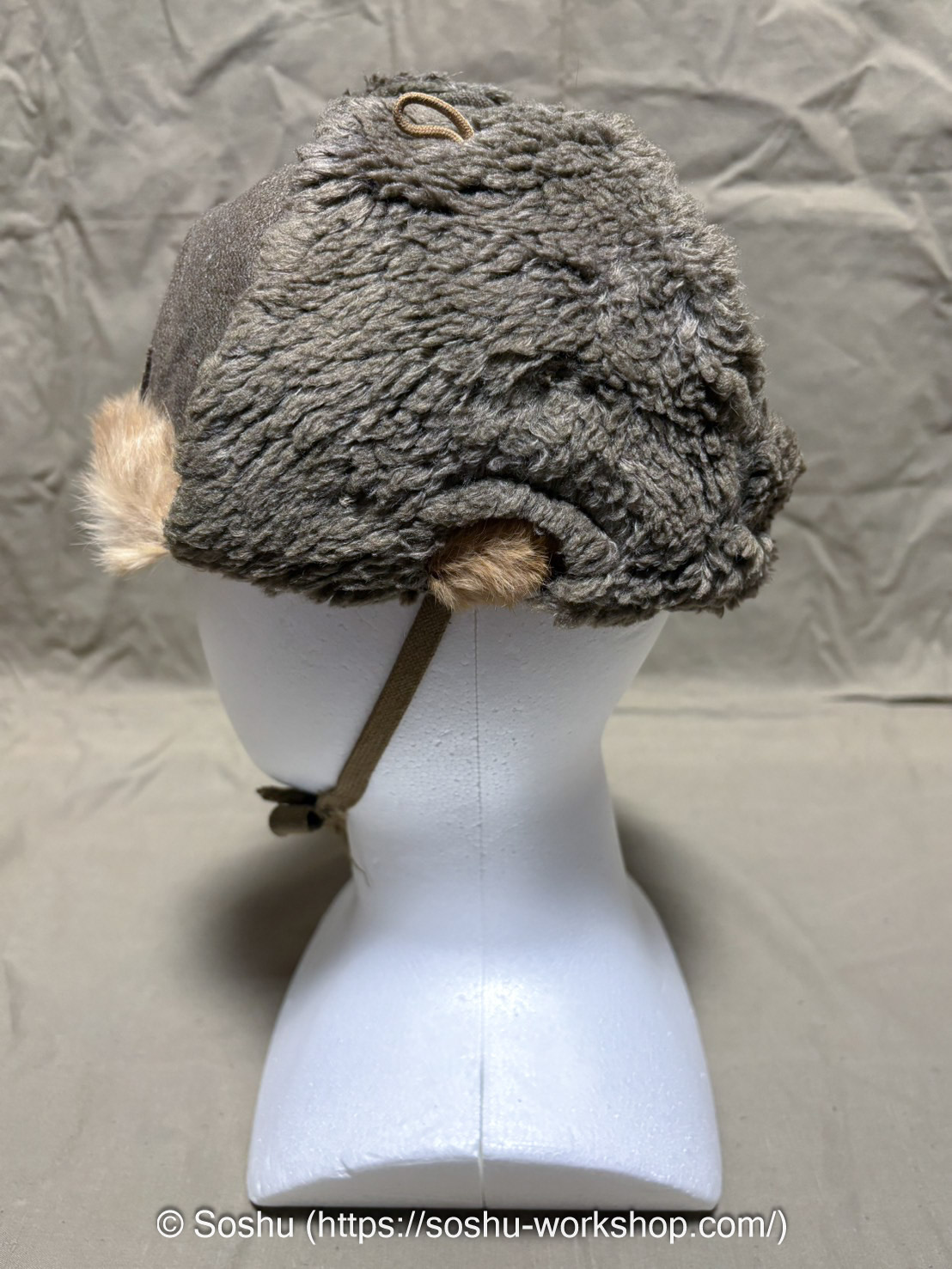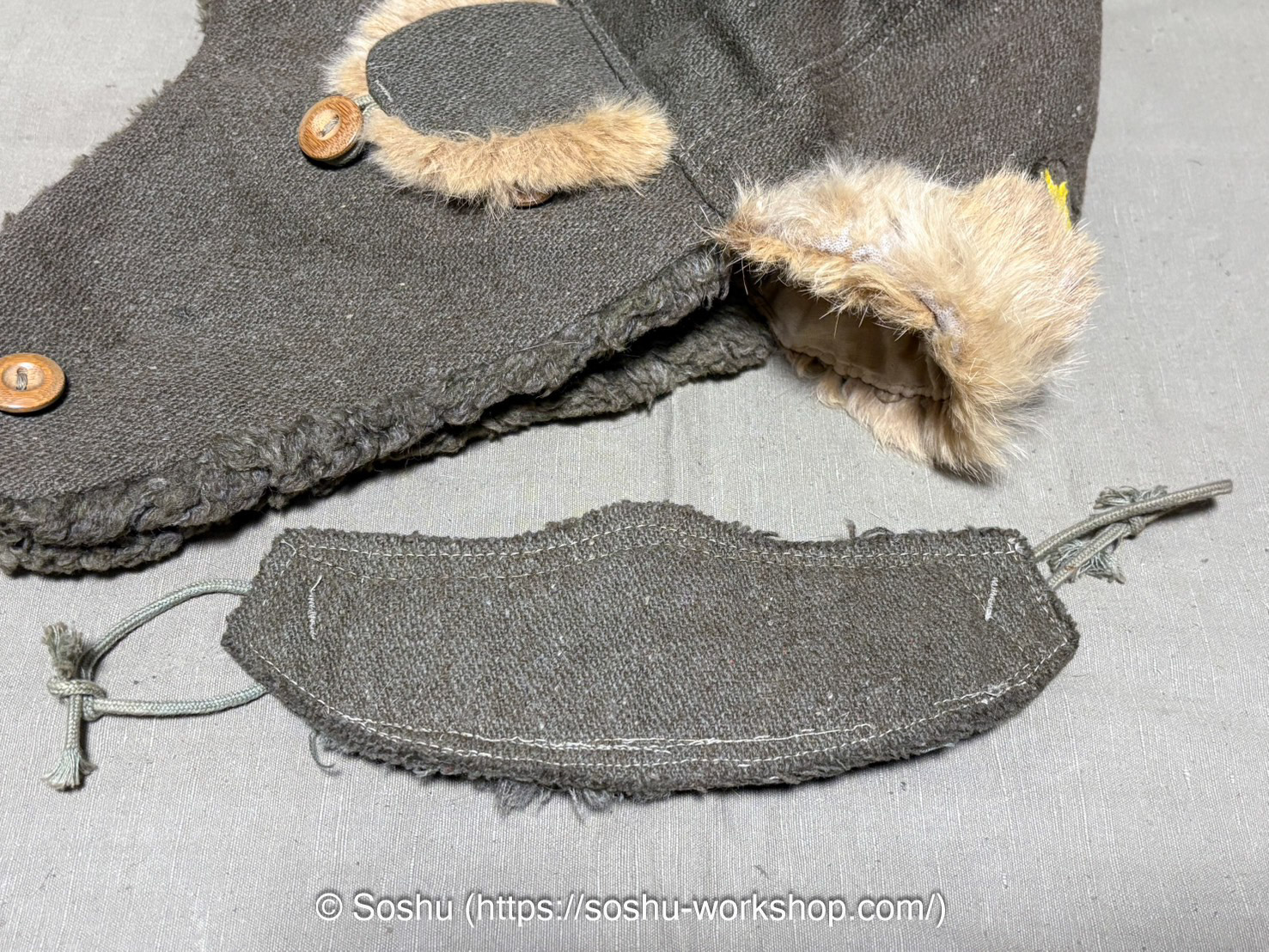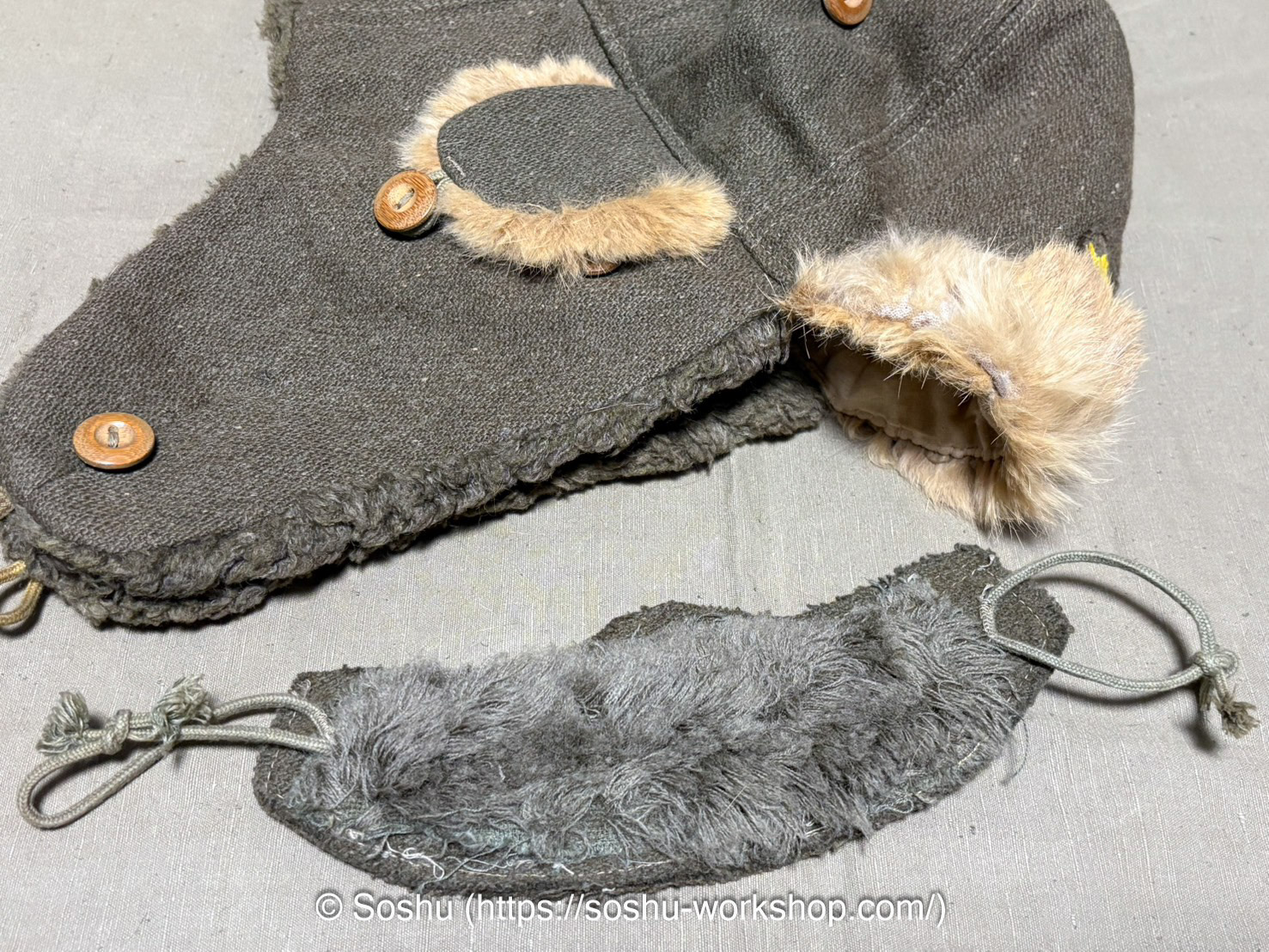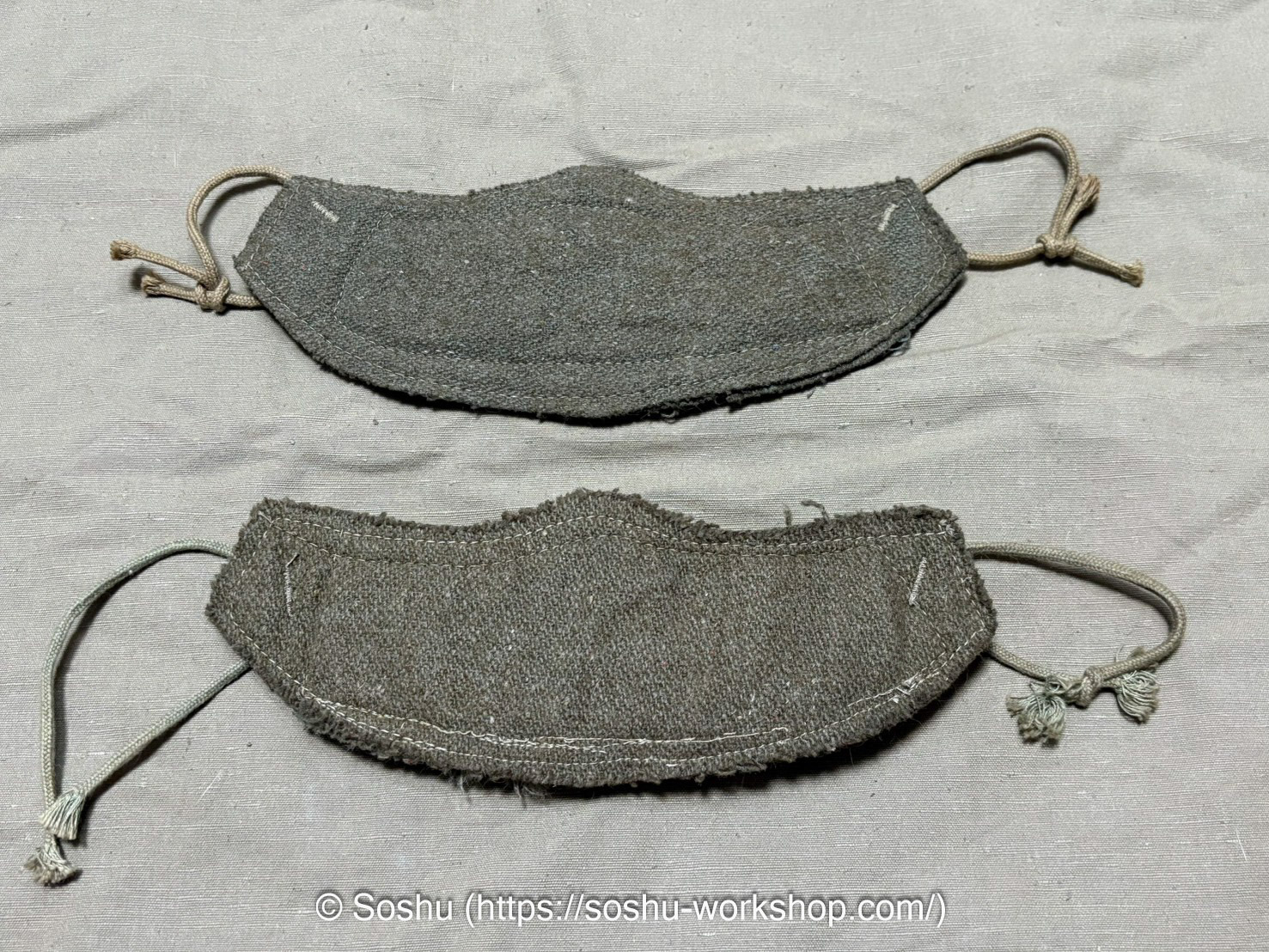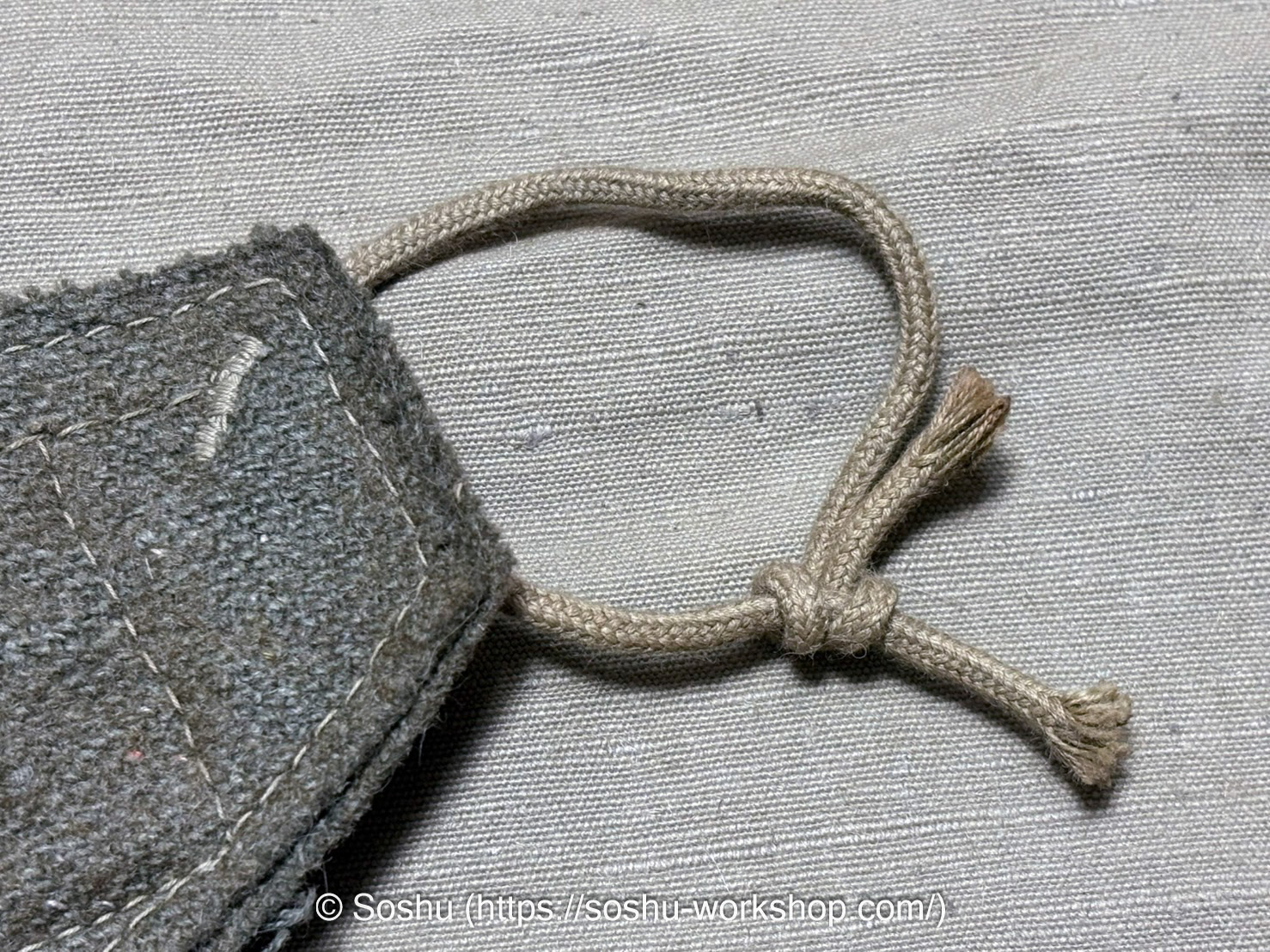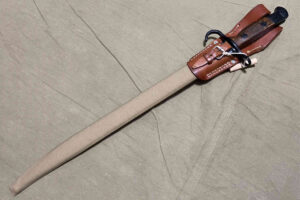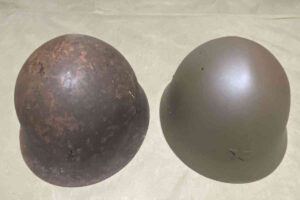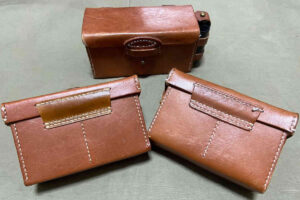The Cold Weather Cap is classified under cold-weather clothing for special regions, with its specifications1 established in Taishō 14 (1925) and subsequently revised in Shōwa 7 (1932), Shōwa 11 (1936), Shōwa 15 (1940), and Shōwa 18 (1943).
This time, I would like to compare authentic examples of the Type 96 cold-weather cap established in Shōwa 11 (1936). Recently, I had the opportunity to acquire a substantial number of these caps, covering various production years, so I want to document them in this article.
- 1 Shōwa 13 (1938) issue, Osaka Army Clothing Depot, Medium size
- 2 Shōwa 14 (possibly Shōwa 16) issue, Army Clothing Depot – Size not marked
- 3 Shōwa 16 (1941) issue, Osaka Army Clothing Depot — Size marking difficult to read
- 4 Shōwa 18 (1943) issue, Osaka Army Clothing Depot, Medium size
- 5 Shōwa 18 (1943) issue, Osaka Army Clothing Depot, Small size
- 6 Nose Cover
- 7 Replica Cold Weather Cap (Made by Nori)
- 8 Footnote
Shōwa 13 (1938) issue, Osaka Army Clothing Depot, Medium size
The color is a yellowish khaki, similar to early Type 5 tunics. There are a few moth holes, but the star insignia remains in good condition. The fur is short-haired.
Shōwa 14 (possibly Shōwa 16) issue, Army Clothing Depot – Size not marked
The fur on the forehead shows some thinning, but there are no moth holes, and overall it is in good condition. The color is a slightly darker khaki. The fur is long-haired. There is no size marking, but based on comparisons with the other caps, it is most likely a medium size (chū-gō).
The chin strap is threaded out through the ear openings and tied at the back, which was likely done by the original owner, so it has been left as is. Perhaps it was tied at the back to keep it out of the way.
The lining is double-layered, and when I lifted the first layer, I found a stamp reading “Shō 16” underneath. This likely means that the lining dates to 1941 (Shōwa 14), while the cap body itself was manufactured in 1941 (Shōwa 16).
Shōwa 16 (1941) issue, Osaka Army Clothing Depot — Size marking difficult to read
The color is brownish. It shows signs of heavy use, with some fur loss, but overall condition is good. The size marking is illegible, but based on comparisons with the other caps, it is most likely a medium size (chū-gō).
The lining fabric has been removed, allowing inspection of the interior. It seems the lining was removed for washing. There is a marking: “Shisa Ikeda Ishimatsu” (the meaning of “Shisa” is unknown).
Shōwa 18 (1943) issue, Osaka Army Clothing Depot, Medium size
It has the deep green color characteristic of Shōwa 18 production. There is no shedding of the fur, but the lining is slightly yellowed, so it may have been used. The fur is the short-haired type.
What makes this example especially rare is that it still retains its nose cover, made from the same fabric as the main body. Although the nose cover was originally issued together with the cap, it is almost always missing today.
Shōwa 18 (1943) issue, Osaka Army Clothing Depot, Small size
This one is also a deep green color. The interior lining is very clean, so it is likely another dead-stock piece. It has the short-haired fur specification, and the inspection stamp is of the simplified type.
This cap also retains its nose cover, made from the same fabric as the main body. Notably, the nose cover contains a wire inside, allowing it to be bent to fit the shape of the wearer’s nose.
Nose Cover
The stitching on the nose cover is rather rough. A wire runs in a loop through the central section. The cords that hook over the ears are unequal in length—the upper cord is longer, and the lower one is shorter. The way the cords are tied appears to be original: the upper cord is tied in an adjustable manner, while the lower cord is secured with a standard hard knot.
Since surviving original nose covers are quite rare, the nose cover alone can be quite valuable.
Replica Cold Weather Cap (Made by Nori)
Since Nori has released a replica of the Cold Weather Cap, I would like to give it a brief introduction. In the photos below, the cap in the center is Nori’s replica, while the ones on the left and right are authentic examples.
His replica is made in a light khaki color similar to a Shōwa 13 one, and it features long-haired fur, just like the Shōwa 14 one. The lining is also an accurate reproduction of the Shōwa 14 construction. Naturally, a nose cover is included as well.
Footnote
- “Army Clothing and Equipment Specifications, Supplementary Volume (2nd Additional Record),
Upper Volume / Part I: Finished Clothing / Section 4: Clothing for Special Regions.”
JACAR (Japan Center for Asian Historical Records), Ref. C14010286100,
Army Clothing and Equipment Specifications, 2nd Additional Record (January–April 1943),
Ministry of Defense, National Institute for Defense Studies. ↩︎

